Toyota LandCruiser Prado review and buyer’s guide
The new LandCruiser Prado is retro-styled and the most modern vehicle in Toyota’s range. It offers versatility, off-road pedigree and towing grunt, but it’s also the most expensive it’s ever been, and it’s not entirely justified.
The Toyota LandCruiser Prado 250 Series is a seven-seat four-wheel drive wagon with extra helpings of off-road capability, a respectable towing capacity and a fairly reliable diesel engine.
But this new generation of Prado has some new equipment that could undermine that fabled Toyota reliability, which you certainly pay handsomely for in 2025. And yet, what seems to be the only media story you’re going to hear about this new version is underwhelming disappointment and poor design.
Have the mainstream motoring media actually come out of hiding to say mean things about Toyota, and do they have some legitimate criticism about the new Prado? Or have they just missed the point? It could be both…
You can download the official Toyota Prado spec sheet here >>
This 250 Series Prado is built on the same platform as LandCruiser 300, which means it also has exactly the same wheelbase and length. It’s almost the same height as a 300 Series, save for 25mm, and it’s exactly the same width - 1980mm.
With so much similarity with the 300 Series, you need to ask yourself two questions: 1. What is the point of the new Prado when the LC300 exists? and 2. Why would I even bother buying the not-actually-bigger brother LandCruiser which costs an extra $28,000?
Because the LC300 has the bigger engine, the 3.3-litre twin-turbo V6 diesel, it also consumes 14 per cent more fuel. Having the Prado instead of the 300 Series, both with the same 110-litre fuel tank, means you’re simply going to go further in the Prado.
But the key metric that differentiates 300 Series from Prado, in terms of actually using it, is the 700kg payload (in a GXL) LandCruiser 300, and the 615kg payload limit in the Prado GXL. The 300 is built for big journeys hauling more stuff.
Even on towing, you’d think 300 Series would be the better option for towing, but they both weigh pretty much the same. So it’s not as though the Prado is lightweight either. The Kakadu is one bag of sugar away from 2.6 tonnes while the LC300 Sahara is a comfortable 2.63 tonnes.
The primary reason for picking the 300 Series is for grunt. That V6 is making 33 per cent more power at half the revs of the 2.8 turbo-diesel in the Prado. That’s what you’re paying an extra $40,000 for - power.
But the Prado also has fierce competition from the likes of Ford Everest, Mitsubishi Pajero Sport (with a new one coming in late 2025/early 2026) and the Isuzu MU-X.
Despite being the newest of the current 4X4 wagons, the Prado has some serious compromises that you’ll want to consider before dropping your money on one. These are aspects that its rivals do quite well.
If you’re shopping for a 7-seat SUV, the Prado is probably too much vehicle just to serve that purpose alone. If the primary use is taking the kids to school and occasional regional trips, you absolutely do not need to spend Prado levels of money to do that.
Something more appropriate would be a Mazda CX-70, Hyundai Santa Fe or Kia Sorento, or potentially even something universally designed for family-hauling and big luggage carrying, like a Kia Carnival.
If you do need a 4WD wagon with great ground clearance, a clever and capable off-road drivetrain, and the relative reliability of a brand and fundamental engineering, despite its imperfections, the Toyota Prado is still going to be a pretty good vehicle - despite the motoring media’s incessant whinging about the boot. We’ll get to that.
FEATURES & PRICING
In some ways, what Toyota has done, quite cleverly, is give you a range of model grades to suit what you might want from your Prado.
The Grey Nomads can splash out on the Kakadu, while the hardcore off-roading nuts can opt for a GX or GXL and have their way with the mods. Then there’s the cashed up mid-life weekend warriors can opt for the five-seat Altitude, or the VX can suit both the seven-seat school runs with the swish interior before heading away camping on school holidays.
These are just generalisations, obviously. The point here is that you don’t have to spend big amounts of money to get a majority of the inherent benefits baked into Prado’s design. You don’t have to have all the toys and equipment and never actually use them.
PRADO GX | $72,500 (before on-road costs) | 5 seats only
INTERIOR
Fabric upholstery with manually adjustable front seats
7-inch digital instrument cluster
Dual-zone climate control
Smart entry/proximity key w/ push-button start
Reversing camera and panoramic view monitor
10-speaker audio system
Five USB-C charging ports, one 12V accessory port and a 220V charging port
12.3-inch touchscreen
Wireless Apple CarPlay and Android Auto
DAB+ radio, satellite navigation
ON-ROAD
3 mode drive select
Autonomous emergency braking, Adaptive cruise control,
Rear parking support brake, lane trace assist and lane departure warning, road sign assist, blind spot monitor
Emergency driving stop system and a driver monitor camera, along with front and rear parking sensors
18-inch alloy wheels
Full-sized spare wheel
LED headlights, taillights, foglamps and DRLs
OFF-ROAD
Central differential
The GX is certainly a base model when it comes to equipment levels, but you wouldn’t know it looking at the price. For over $70,000 you could get yourself into a better equipped and more luxurious Mazda CX-60 GT or Hyundai Palisade Elite.
But what you do get within the Prado range is the definite configuration of a five-seat all-wheel drive LandCruiser with a centre differential… and all the same equipment you can also have (and lots more) in a different vehicle.
What sets the Prado apart is its superior towing capacity, thanks to its 300 Series skeleton. This means if you’re doing all the dirty, laborious stuff like towing, carrying equipment, trudging dirty boots in and out, working in the rain, but not necessarily needing to to hardcore off-roading, you’ll probably find the GX is a very useful tool.
It just means you only have AWD to get your through, and in most cases, this is probably going to be enough. Gravel roads, steep driveways, parking on the grass, general easy-access camping activities - these can all be done using all-wheel drive in the same way the Palisade, a Subaru Outback or a Mitsubishi Outlander will also be quite good in these situations… for less money, by the way.
PRADO GXL | $80,000 (before on-road costs) | 7 seats only
Another $6500 (approx.) gets you in addition to the GXL:
Roof rails
Powered tailgate
Rear privacy glass
Front wireless charging pad
Synthetic leather upholstery
Heated and ventilated front seats
8-way powered driver’s seat
Leather-accented steering wheel and shift knob
Rear-seat air conditioning panel
Auto-dimming rearview mirror
2 x USB-C ports for row 3 (6 in total)
The GXL is ideal for touring. You still get the centre differential offering AWD in wet conditions, but with added luxuries like the heated and cooled seats that are also electrically adjustable. The roof rails beg you to stick some crossrails up there and add some kind of cargo system like a pod or basket to extend the stowage options for your big trips.
But you’ve now also got the third row of seats which further suggests adding storage options (that’s if the kids are coming with you).
PRADO VX | $87,400 (before on-road costs) | 7 seats only
Adding $7400 on top of the GXL gets you:
20-inch premium alloy wheels
Bi-LED headlamps with Dynamic Auto Levelling
Leather accented seats with power adjustable driver seat
Driver’s seat memory – 2 positions
12.3-inch Multi Information Display
14-speaker JBL premium audio system
Refrigerated rear console box
Carpet mats
OFF-ROAD
Multi Terrain Select + Monitor
5 mode drive select
Tyre Inflation Pressure Warning
Adaptive Variable Suspension system
The VX truly is a middle-of-the-range choice if you think you need it to live up to those hardcore off-roading ambitions on the weekend, but probably won’t. Then, when you do get back from very mild camping with the family, you can settle back into suburban life ferrying kids to private school and running the office on Monday-to-Friday.
You’ll probably want to get a separate set of aggressive off-road tyres on their own correct-sized rims to bolt up for hitting the rougher tracks, rather than the standard 20-inch alloys with H/T tyres. Otherwise, just leave the 20s on it and try not to scratch them, remembering to take care not to puncture the fragile sidewalls.
PRADO ALTITUDE | $92,700 (before on-road costs) | 5 seats only
The full breadth of Prado’s off-road capability becomes available from the Altitude up to the Kakadu.
18-inch alloy wheels with Toyo Open Country All-Terrain tyres
Tilt and slide moonroof
60:40 split fold 2nd row seats
Heated steering wheel
Digital rear view mirror
Head-up display
3 mode drive select
Two-tone exterior paint (optional)
OFF-ROAD
Centre lockable Torsen 7 limited slip differential (LSD)
Lockable rear differential
Front stabiliser disconnect mechanism
Crawl control
Adaptive variable suspension
Traction control terrain system: dirt, mud, snow and sand
PRADO KAKADU | $100,000 (before on-road costs) | 7 seats only
20-inch alloy wheels
Illuminated side steps
Panoramic moonroof
50:50 split fold 3rd row seats
Heated and ventilated 2nd row seats
7-inch driver’s information display
5 mode drive select
Tyre Inflation Pressure Warning
Adaptive variable suspension system
INTERIOR
The biggest improvement to the Prado, compared with its predecessor, is the interior. In particular, the cockpit, from the driver’s perspective, is not just a much-needed refreshment in design, but it’s retained functionality.
The current trend with masculine vehicles like dual-cab utes and 4X4s is to take a square and slice the corners off; this is the general design ethos you can see in the Prado, and other models like the Triton, Everest, Kia Tasman and LandCruiser 300 Series.
You can see this theme in the Prado’s main infotainment touchscreen shroud, and the binnacle surrounding the driver’s display. You can see it in the door mirrors, the horn and the centre air vents. But then something weird happens to the rest of the cabin.
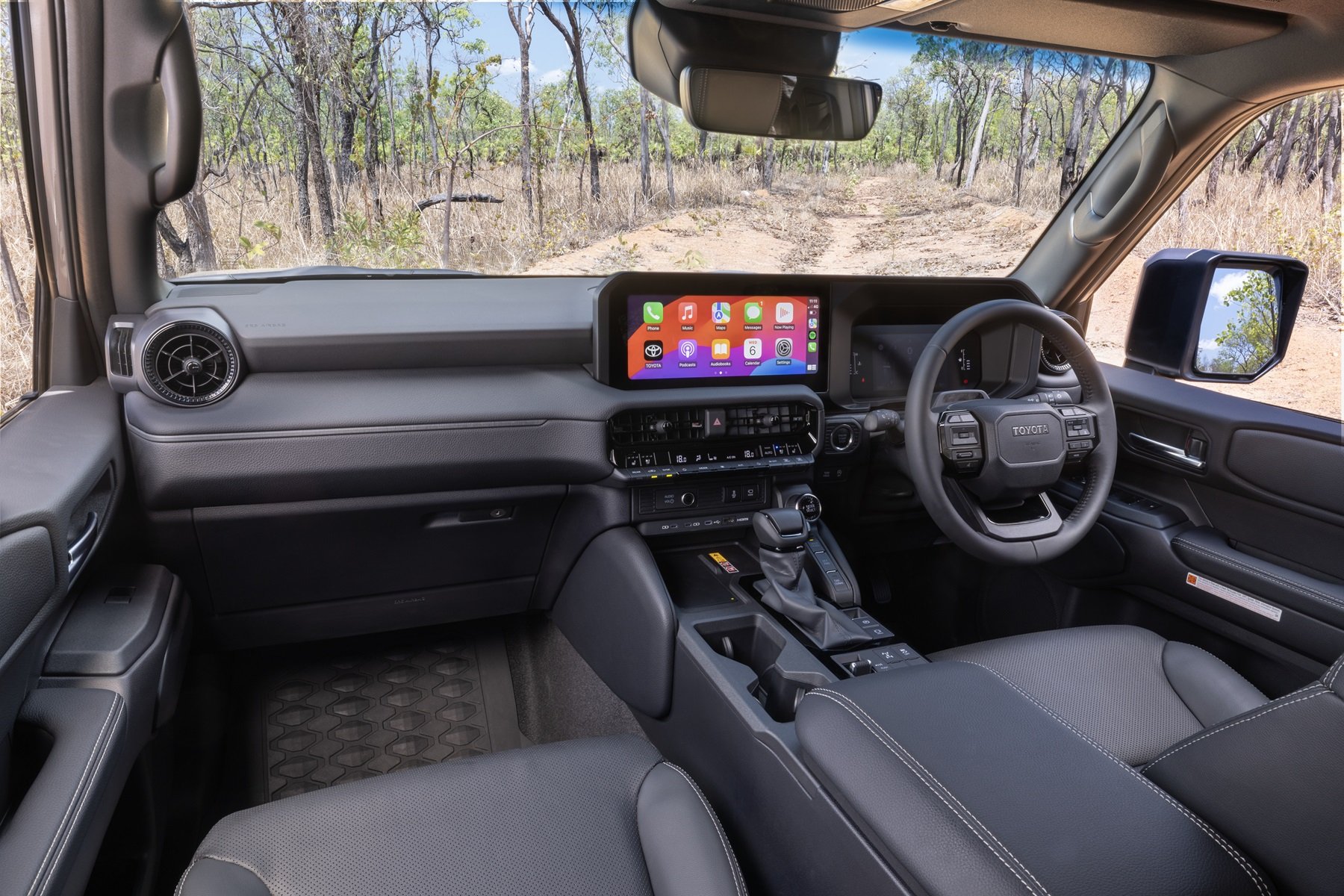
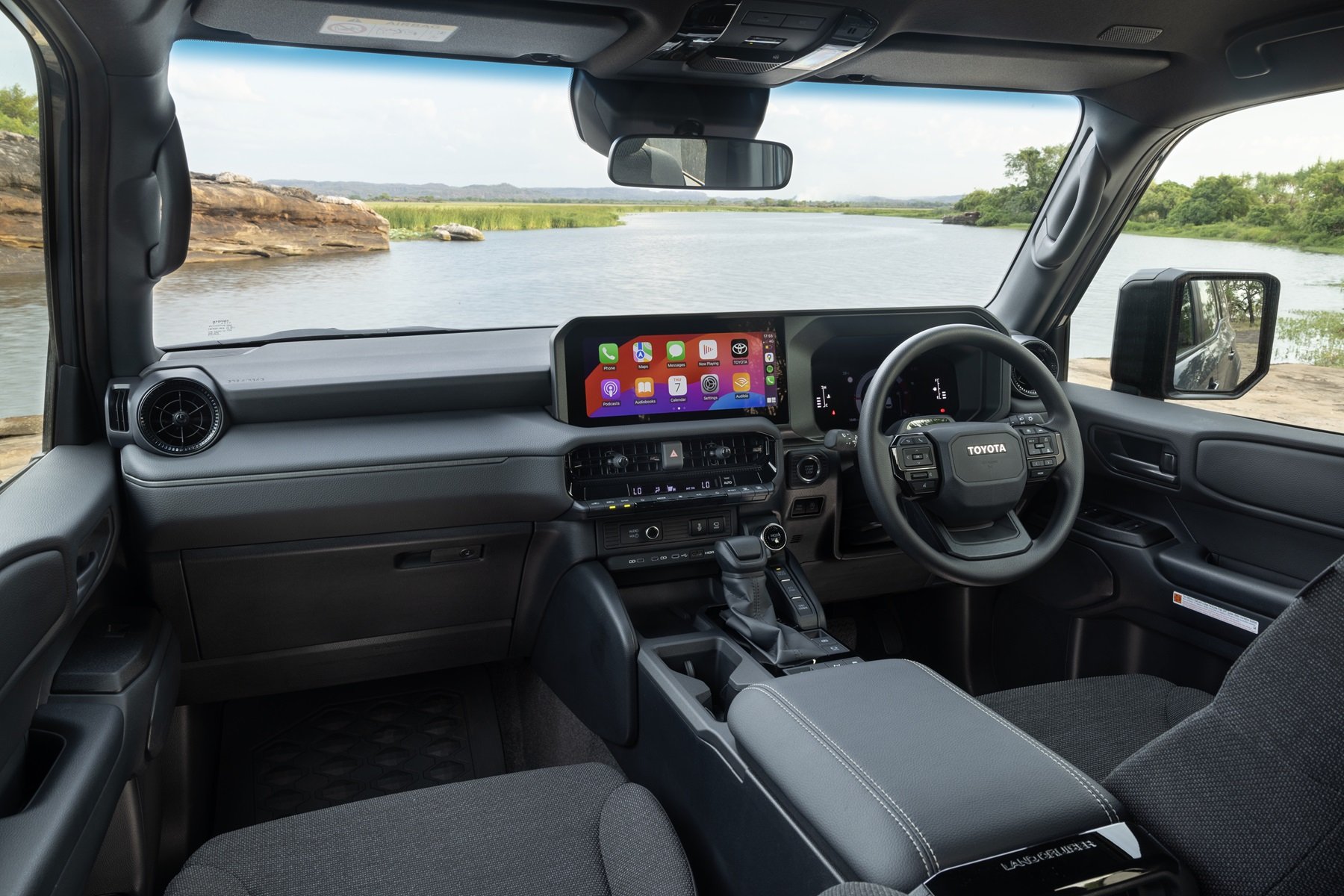
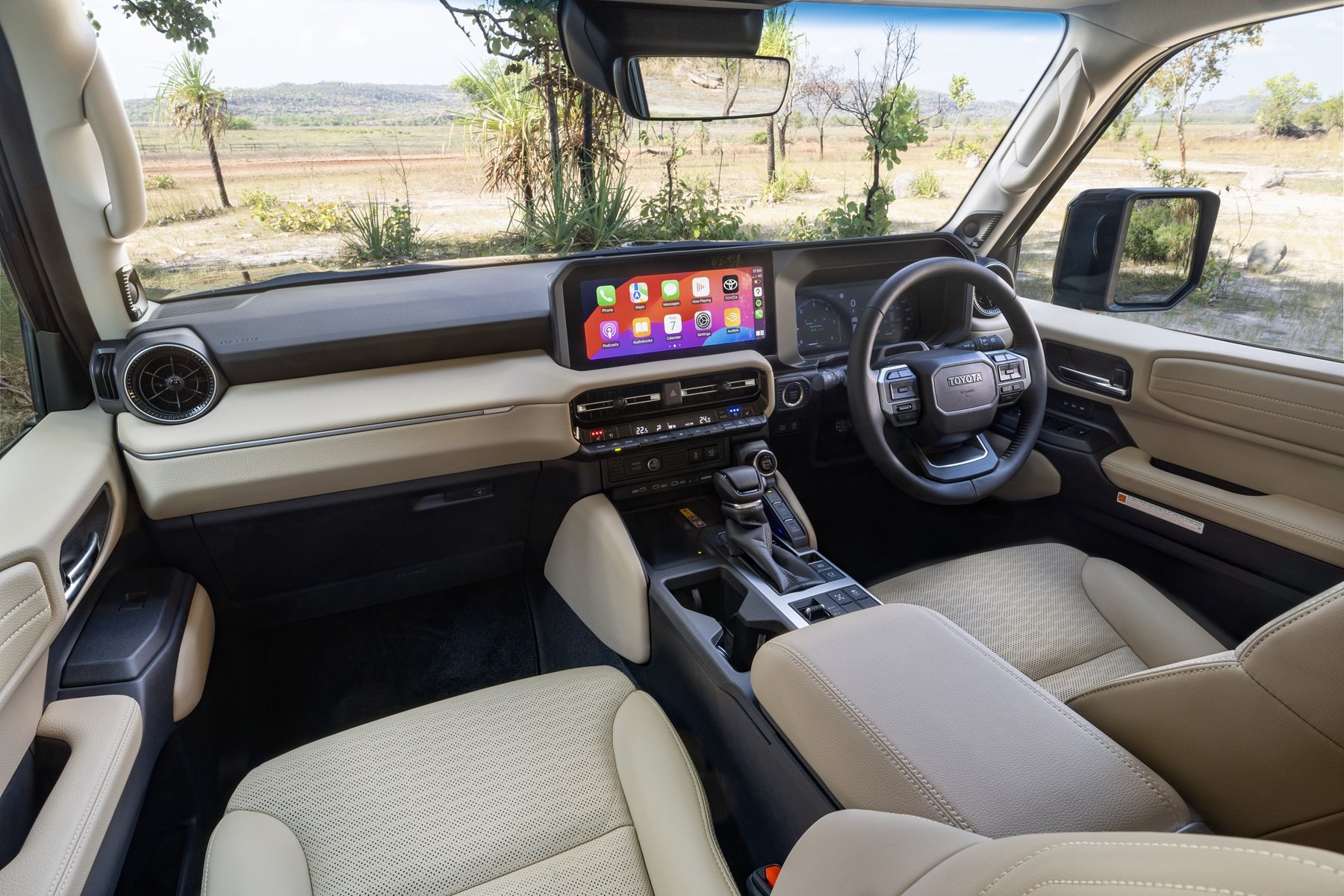
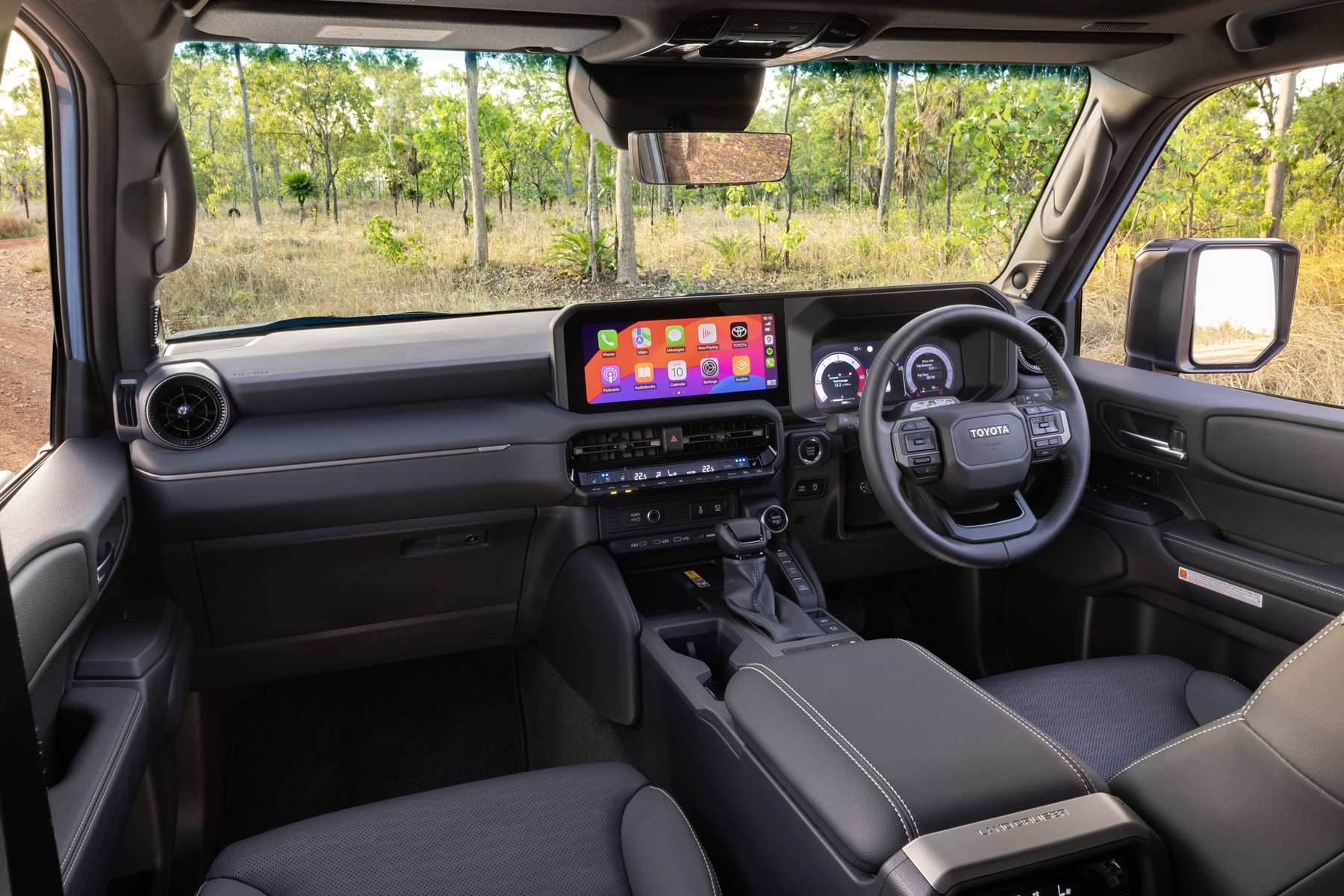
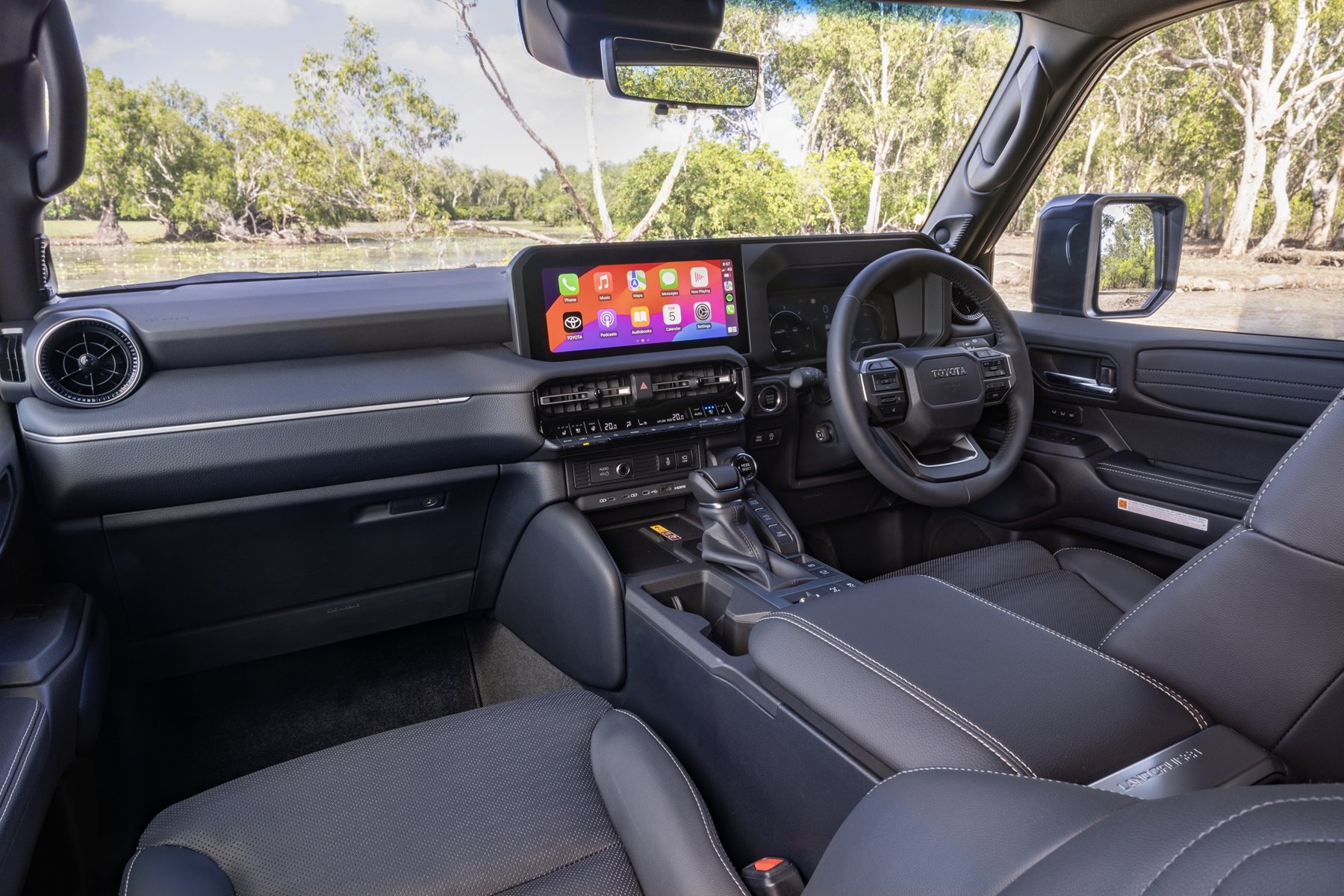
The outboard air vents are round; completely at-odds with the central rectangular vents. There are lines everywhere and they’re either not part of a square or rectangle (with its corners cut off), or they’re not a circle like the prominent outboard air vents. They’re blocky and don’t flow, or simply don’t match what the front exterior of the vehicle suggests is going to be the design ethos.
This is nitpicking, of course, and most Prado owns - potentially such as yourself - may not give a rat’s arse about this weirdness. That’s okay, because the rest of the interior is mostly pretty functional and not weird. Mostly.
In fact there is some dedicated forethought toward the off-road enthusiast with the inclusion of those knee brace pads either side of the driver and passenger footwells. They’re great for bracing yourself during swaying or rocking motions as you clamber up or down uneven terrain.
Having cooled seats (‘ventilated’ as the industry calls them) on the GXL is a nice inclusion (although a cynic might say, ‘So they bloody-well should at $80,000). Toyota is historically quite stingy with that sort of thing, so it’s good to see.
Some more storage cubby holes for your various things might’ve been a nice thought, aside from the usual door bins/bottle holder and the single phone charging pad.
I'll help you save thousands on a Toyota Prado
Just fill in this form.
No more car dealership rip-offs.
Greater transparency.
Less stress.
ENGINE
The 250 Series Prado’s 2.8 turbo-diesel is still making 150kW @ 3000 revs, but now weighs 2.6 tonnes. That’s another 5 per cent heavier, moving another potential 7 per cent of GVM, and potentially towing an additional 15 per cent heavier trailer. As a result, the power-weight ratio is now worse than the old Prado: 59 kw per tonne vs 61 in the 150 Series.
For better or worse, the engine powering the new Prado is the same 2.8-litre turbo-diesel unit they’ve been using in the fourth-generation Prado since 2015. It’s the same diesel engine used in the Hilux and its wagon-bodied derivative, the Fortuner.
It’s also the same 2.8 which Toyota initially failed to properly develop its DPF system for, denied it was faulty despite thousands of customer complaints, then lied about it to the public, before rectifying it with a manual regeneration button about six years late.
However, this does not mean the 2.8 engine itself, codenamed 1GD-FTV, was junk. In fact, it’s been quite reliable with 450 Newton-metres of torque and then, from 2020 onwards, 500Nm - all from 130kW and (from 2020 onwards) 150kW of peak power.
Toyota Australia sold countless tens of thousands of Prados between 2015 and 2024. And they absolutely weren’t all shitboxes.
What this means in terms of positives is we know what this powertrain can do, what its niggles are (because no engine or vehicle is perfect) and how to fix them. More importantly, it means all the running fixes Toyota Australia has made to this engine carry over into this new Prado generation.
With a substantial amount of less power than the 300 Series, overtaking is going to be slower if you’re pulling an equivalent trailer.
Toyota’s 48-volt “V-Active” mild hybrid system is also present on the new Prado, as debuted on the Hilux last year. This is essentially a stop-start system that uses a lithium-ion battery and electric motor to capture kinetic energy, store it and use that electricity to power the vehicle’s accessories, rather than running it on a belt driven by the engine. It saves a teeny-tiny amount of fuel, but probably not enough that you would ever notice.
This 48-volt system does not qualify Prado as a conventional hybrid (because otherwise Toyota wouldn’t have resisted calling it that) and certainly they don’t want to go calling it the ‘mild hybrid’ system that it really is.
This V-Active system contributes just 12 kilowatts and 65 Newton-metres of torque to the powertrain, which is so inconsequential to the overall output. It’s the mildest of mild hybrid arrangements, especially when you consider this is the output of 2.6 typical 18-volt power tool batteries.
Does it have any tangible benefit? Yes. It does reduce emissions, however slightly, which means marginally cleaner air than without it. Just don’t go buying a Prado for the 48-volt starter-motor/alternator middle-man, over a Ranger or Triton, because it isn’t a distinct economical advantage. Toyota is only putting it there because it has to under new vehicle emissions standards.
New to the 2.8 engine is the addition of having to top up the 17.4-litre AdBlue/diesel exhaust fluid urea tank every so often.
The more fuel you burn, the more AdBlue/DEF you will consume as a result of it being intrinsic to the combustion and exhaust treatment system.
Just like 2024’s Mitsubishi Triton and the Ford Ranger/Everest dizygotic twins, AdBlue (or urea as it is also known) is now required to be topped up in order to combat emissions and reduce their impact on human health in the same way the DPF was developed to catch particulates and oxides of nitrogen to reduce their ability to wreak havoc with your DNA (or your kids’).
TRANSMISSION
The new 8-speed epicyclic automatic transmission with torque converter is likely going to be quite robust. It’s got two more gears than the previous Prado generation, and has wider ratios.
Final drive has gone from 3.9:1 to now 3.5:1, which will make Prado a fantastic on-road long-distance tourer.
It’s almost blasphemy to suggest that Prado’s four-wheel drive system won’t be anything other than capable and realiable, providing it isn’t abused, tortured etc.
The ability to disconnect the front stabiliser bar on Altitude and Kakadu models will increase wheel articulation in heavily rutted terrain, and the lockable rear differential that will help get you out. Crawl mode is available on all Prado model grades as well.
But it’s ultimately the centre differential that offers full-time all-wheel drive, even on high-traction surfaces like wet bitumen, steep driveways and good gravel roads, that is going to be the most benefit for the majority of the time.
TOWING
The numbers are really going to matter here, because they’re in abundance in the Prado range and they vary between what you can carry depending on which model grade you have.
Overall, for every model grade, the gross combination mass (GCM) is 6600kg.
But for the gross vehicle mass (GVM) it starts at 3100kg (for the ‘GX’), increasing to 3150kg (on the ‘GXL’), hitting 3180kg (on Prado ‘VX’), before coming back down again to 3100kg (specifically on the ‘Altitude’), then increasing again to 3200kg (but only for the ‘Kakadu’ top-spec).
This means you’re maximum permitted payload capacity is going to vary accordingly. On the GX you get 605kg, on the GXL it’s 615kg (the most for the entire model range), dipping back to 610kg for the VX, then dropping to 580kg on the Altitude, before levelling again at 605kg for Kakadu.
Taking into account the notional 300kg towball download you might put on the back (without having a confirmed figure in any published Toyota Australia specifications or marketing material), you’re going to run out of payload pretty quickly - particularly if you have that 4X4 modification addiction that afflicts so many buyers these days.
FUNCTIONALITY
Sharing the same ladder-frame construction as the 300 Series, the 250 Prado now has a 6cm longer wheelbase than the 150, it’s longer by 16.5cm, and a wider track at both the front and rear means it sits slightly wider on the road giving it a better centre of gravity.
So overall it’s got marginally more legroom for the first and second row of seats, and the boot has a claimed 553 litres with row three seats collapsed, or just 104 litres with them up. And with both rows of rear seats collapsed, there’s a claimed 974 litres available. This is where the new Prado is a small step backwards for mankind.
The old 150 Series Prado had 120 litres behind row three when it was deployed. Behind row 2 with the third row collapsed, you got 620 litres, and with both the second and third rows of seats collapsed, it was a whopping 1833 litres of cargo space.
So you’re paying an additional $20,000, for notionally 46 per cent less cargo space (rows 2 & 3 down) or 10 per cent less (with row 3 down). Yet they claim the 300 Series platform:
has enabled Toyota to extend the overall length of the LandCruiser Prado by 165mm… providing an increase in interior space
They certainly haven’t increased anything with regard to luggage space.
The rear half of the Prado is a dichotomous example of clever design (within modern constraints) and serious compromise (in the face of a notional $100,000 exchange).
On one hand, you’ve got two five-seat versions of Prado, the Altitude (which Toyota is calling its new “flagship model”) and the GX base model. These two offer the added space courtesy of removing row three, but in the Altitude you actually get the least amount of permitted payload - just 580kg.
In the seven-seat versions you get 20 litres of volume behind the third row, but that’s once you take out the Bunnings-spec cargo box they’ve used to not just add a layer of stowage functionality (to put dirty recovery gear or sandy togs etc.) to that admittedly tight space.
But it also helps maintain a ‘flat floor’ when you do drop the third row of seats. Otherwise, you would have a massive drop-off at the rearmost end of the boot floor where everything would fall into as you accelerate or climb slopes. Then, as you open the tailgate, everything would fall out. This is a basic positive observation pretty much all the major motoring media sites missed in their clickbait coverage of the new Prado.
Go watch them. You’ll notice it’s all criticism without any basis in understanding for what Toyota’s designers have actually managed to accomplish despite the constraints put on them by emissions regulations. They have to do it, and this is the most practicable way they could make it work.
DRAWBACKS
Let’s start with the minor drawbacks here, finishing with more broad, overarching drawbacks to the new model as a whole.
The price is a problem. The fact ‘Toyota Tax’ is well-used vernacular these days tells you a great deal. And in the case of new Prado, it’s entirely justified.
The $80,000 GX base model is the only model grade where you won’t pay Luxury Car Tax. There’s roughly $400 of LCT to pay on a GXL, or about $5000 for the top-shelf Kakadu.
Keep this in mind if you’re still unsure if you’ll ever actually take your Prado off-road. Perhaps a soft-roading large SUV with a robust all-wheel drive system might be better suited and worth the money?
Now, it’s time to nit-pick the Prado.
They couldn’t help themselves but to put shiny piano black plastic around the transmission shifter on the GXL. Taking a leaf out of Kia’s interior design book.
It’s surprising Toyota didn’t just fit a parabolic mirror down there while they were designing this magnifier of light, the better to burn your retinas as you cross the Nullabor for six long hours. The fake aluminium trim used on the VX isn’t much better.
When you deactivate some of the pseudo-safety equipment and engage 4WD, the driver’s display insists on constantly displaying message prompts that block out your more pertinent information displays such as temperature etc.
In order to clear the message prompt you have to hit the ‘return’ arrow before it will disappear, only to return again several seconds later as you get up to speed. Clear it again, wait five seconds, rinse and repeat.
Having the spare wheel and tyre stowed externally up under the boot floor has both a pro and a con. The pro is that it lowers the vehicle’s centre of gravity, frees up space on the tailgate, and means you can not just see out the entirety of the rear window, but also open it independently of the tailgate itself.
The con of the spare fitted outside and underneath means it is now potentially more vulnerable to on-road debris that might catch up under the vehicle where it can possibly slash the tyre on its way through, only for you to realise when you come to actually need it. At least you don’t have to go packing a filthy flat under the boot floor.
There isn’t a dedicated sunglasses holder anymore, either.
It might seem pretty cheap of Toyota not to fit the locking rear differential to the GXL. That’s because it is.
It’s a complete failure to understand the consumer at best, and at worst it’s a deliberate attempt to force you to spend more money to get all the off-road toys you really want, while having to endure all the luxury stuff most bona fide off-road enthusiasts generally don’t want.
In an age where all the gear you don’t want is being foisted upon us (the pseudo-safety tech), and the equipment you do want is exorbitant, Toyota has doubled-down by putting the adaptive suspension on the VX ($95.5K) and Kakadu ($110.6K). The locking rear diff and front stabiliser disconnect mechanism are on the Altitude model - at $101,000 driveaway.
OFF-ROAD
No 4L, no rear diff lock on GX, GXL.
This brings us neatly to the more sweeping drawback to the Prado range. Off the shelf, you can’t buy the cheap-n-cheerful GX or GXL and take it for hardcore off-roading adventures, because it doesn’t come with the factory rear differential lock. Typically, the off-roading fraternity loves the base or first-tier model of any 4WD because they don’t want all the gizmos, but they do want the hardware that allows them to head into the serious tracks.
But that begs the next question about how easily the Prado can be modified. Obviously, here at AutoExpert the general consensus is don’t modify your 4WD until you actually have a problem that needs to be solved that the standard vehicle cannot overcome. Most 4WDs, off the showroom floor, are highly capable machines and can easily handle the majority of the driving you’re likely to do, albeit with the very mildest of modifications such as aggressive (but correctly sized) all-terrain tyres.
So if you are the stereotypical 4X4 modification nutcase (that’s a compliment, by the way) then you can absolutely have-at a GX or GXL and go for your life. Scratch that itch. Just be aware that you’re modifying the first iteration of an entirely new generation of vehicle which hasn’t even been on sale for 12 months.
The ability for the aftermarket accessories sector to whip up mods for your Prado is going to be scarce for the first 18 months of so. Be aware of that, too.
Ground clearance varies with model grade but it’s 210mm for the GX and GXL, and increases to 221mm on the VX, Altitude and Kakadu. If you’re comparing it to a 300 Series, the Sahara offers just 235mm. That’s $150K for an extra 14mm of ride height. That’s $2800 per millimetre of additional clearance.
MAIN COMPETITORS
FORD EVEREST SPORT | $81,000 driveaway approx. | 3L V6 diesel
Everest in general is probably the closest non-Toyota model to the 250 Prado. It’s just got another 30 kilowatts that are going to make overtaking (while towing) a breeze where the Prado will be working harder.
Everest Sport actually makes the Prado GXL look like a bit of a rip-off, despite being a 3-year-old design. Where the Everest looks modern, the Prado has gone for retro and that’s probably going to suit its buyers (potentially you) quite well.
But the fact is, at the same price, you have to ask yourself: why would you buy a Prado GXL when you can have the Everest Sport at $6000 cheaper, with those ventilated front seats, an extra 88kg of payload, and 30 more kilowatts? Everest Sport is even 80kg lighter than the GXL, so there’s that.
Peak power 184kW @ 3250 RPM
Power-to-weight ratio: 76kW per tonne
Length 4940 mm | Width 1923 mm | Height 1841 mm
Wheelbase 2900 mm | Turning circle 11.8 metres
Kerb weight 2455 kg | Payload 703 kg
Gross vehicle mass 3150 kg | Gross combination mass 6250 kg
Towing capacity (braked) 3000 kg | Towball download limit 350kg
Ground clearance 229 | Wading depth 800
Approach angle 30 degrees | Departure angle 25 degrees | Breakover angle 21 degrees
GWM TANK 500 | $74,000 driveaway approx. | 2L 4-cyl turbo-petrol hybrid
The Tank 500 is probably not going to survive 10 years of taking you into the Gibson Desert and back, and survive the Big Lap of Australia hitting all the boggiest Cape York swamps and clawing up the most insurmountable High Country goat tracks. The next generation Tank might, however.
It’s very good first draft. Just imagine what the Tank 500 will be capable of in another generation’s worth of development in, say, 5-7 years’ time.
This is the kind of vehicle Toyota Prado engineers dread the most. Not because it’s an outright better vehicle than the Prado - it’s not. But on their first attempt they’ve fired a shot broadside into Toyota’s build quality reputation.
Peak power (combined) 255kW (180kW @ 5500 RPM)
Power-to-weight ratio: 99kW per tonne
Length 5078 mm | Width 1934 mm | Height 1905 mm
Wheelbase 2850 mm | Turning circle 11.2 metres
Payload 790 kg | Kerb weight 2605 kg
Gross Vehicle Mass 3395 kg | Gross Combination Mass 6705 kg
Towing capacity (braked) 3000 kg
Wading depth 800mm | Ground clearance 224mm
Approach angle 30 degrees | Departure angle 24 degrees | Breakover angle 22 degrees
TOYOTA LANDCRUISER 300 Sahara | $151,400 (GX) | 3.3L twin-turbo-diesel V6
A 300 Series will do a Prado’s job but with 30 per cent more grunt, and that’s the primary reason you would pay the serious financial premium for one. Not necessarily a Sahara, but certainly the GXL is quite popular for its modest level of equipment, its beckoning for you to modify it (against better judgement), and because a GXL is about $40,000 cheaper than the one named after a desert. And you get the same engine.
Peak power 227 kW @ 4000 RPM
Power-to-weight ratio: 89 kW per tonne
Length 4980 mm | Width 1980 mm | Height 1950 mm
Wheelbase 2850 mm | Turning circle 11.8 metres
Payload 650 kg | Kerb weight 2630 kg
Gross Vehicle Mass 3280 kg | Gross Combination Mass 6750 kg
Towing capacity (braked) 3500 kg
Wading depth 800mm | Ground clearance 245 mm
Approach angle 32 degrees | Departure angle 25 degrees | Breakover angle 21 degrees
NISSAN PATROL Warrior | $117,00 | 5.6L V8 petrol, aspirated
Patrol Warrior might have a cockpit that is barely restraining those late 2000s vibes, but when you’ve got a side-exit exhaust snarling and bellowing through the bush as you arrive at camp… Who cares about the interior? It might be dated, but it’s functional, it’s robust, and it has DVD screens in the headrests. (Don’t listen to Gen-Z. As a novelty, DVD screens are fun.)
There are curtain airbags that all the way into row three seats, there’s a highly capable and reliable 4WD driveline underneath you, and the Patrol has a 7000kg GCM limit. So you’re always going to have the greatest margin for safety when it comes to loading up the family, the caravan and hitting the road.
Up against a 2.8 Prado, the Patrol Warrior is a bargain. It has one of the last naturally-aspirated petrol V8 engines in mass production today. There aren’t many of these beauties left and you absolutely should feel obligated to preserve this misunderstood, maligned and endangered species, on the brink of extinction.
Peak power 298kW @ 5800 RPM
Power-to-weight ratio: 106 kW per tonne
Length 5269 mm | Width 2079 mm | Height 1990 mm
Wheelbase 3075 mm | Turning circle 11.8 metres
Payload 810 kg | Kerb weight 2884 kg
Gross Vehicle Mass 3620 kg | Gross Combination Mass 7000 kg
Towing capacity (braked) 3500 kg | Towball download limit 350kg
Wading depth 700 mm | Ground clearance 323 mm
Approach angle 40 degrees | Departure angle 23 degrees | Breakover angle 24 degrees (Ti-L)
MITSUBISHI PAJERO SPORT GSR | $68,000 driveaway approx. | 2.4L 4-cyl turbo-diesel
Probably the best-value 4WD 7-seat wagon you can buy today - while you still can. A new Pajero Sport is right around the corner, so if you want a top-spec blinged-up GSR model (which looks outrageously good in burgundy paint with black trim), you better make up your mind.
The outgoing Pajero Sport has been a leader in terms of value, thanks in no small part to its very clever centre differential and Super Select II transmission. This allowed you, even back in 2015(!), to shift into High-4 (yep, 4H) on-the-fly up to 100km/h on a high traction surface. Sudden downpours, gravel roads, snowy alpine roads, steep driveways - you could be in effective all-wheel drive.
Being based on the old Triton, it’s a bit slender inside, but in off-roading terms that has direct benefits in being able to splice your way through tracks leaving less destruction in your wake, missing the overhanging branches that otherwise scratch other bigger, wider vehicles, and it meant the whole vehicle was significantly lighter and therefore easier to recover. Keeping $24,000 over a Ford Everest or Prado is pretty sweet savings.
Peak power 133kW @ 3500 RPM
Power-to-weight ratio: 62kW per tonne
Length 4825 mm | Width 1815 mm | Height 1835 mm
Wheelbase 2800 mm
Payload 657 kg | Kerb weight 2118 kg
Gross Vehicle Mass 2775 kg | Gross Combination Mass 5565 kg
Towing capacity (braked) 3100 kg
Wading depth 700mm | Ground clearance 218mm
Approach angle 30 degrees | Departure angle 24 degrees | Breakover angle 23 degrees
CONCLUSION
The new 250 Series LandCruiser Prado has copped a lot of flack these last few months. But frankly, a lot of it is just riding a wave of hysteria and uninformed bullshit.
Despite the justified criticisms AutoExpert has levelled at the feet of Toyota, the fact is the Prado isn’t worse than the old one. The 150 Series didn’t have to comply with a diesel exhaust fluid system, nor did it need to ride and handle like a Mercedes in modern times - it drove like a jiggly tank and that was perfectly okay 10 years ago.
But the 250 Prado has a whole different set of design parameters engineers have to work within. Everything has become more expensive (to make and buy), the car industry has never been so intensely competitive and overcrowded, and manufacturers are constantly kicked in the guts by the fierce global political situation of the day.
The fact this Prado is as good as it is, with only the few compromises that it comes with, while also being compliant, and desperately holding onto Toyota’s reliability reputation simultaneously by using a powertrain that has proven itself. It’s impressive that it didn’t turn out worse.
Toyota is the biggest car company in the world by volume. And generally speaking, they are the best at predicting where the car industry is going and the prevailing consumer sentiments, in the streets. Hybridising a diesel engine seems like such a wise, conservative direction. It sides with the more energy dense fuel, while also keeping the adverse effects of adding batteries and motors (complexity) to a minimum.
Provided Toyota sorts out the 48-volt system (and it seems like they already are) then it’s hard to see the Prado not finding its way back to the top of the large SUV sales charts.
Having said that, just because it’s one of the most popular, doesn’t necessarily make it the best value for your money. We also don’t know this early on if the 250 Prado has any as-yet undiscovered or unresolved flaws, so absolutely wait until late 2025 to see how the sales, reliability and any teething issues go.
And make sure you think carefully about how exactly you intend to use this next vehicle you’re shortlisting. Consider whether you need the most amount of power, the best all-round value, or simply to get the job done - and can a $68,000 Pajero Sport do the job just as well, while saving you $20,000?
There’s a thought.
If you still want a new 250 Series LandCruiser Prado (and who can blame you - that front end), click the red button below.

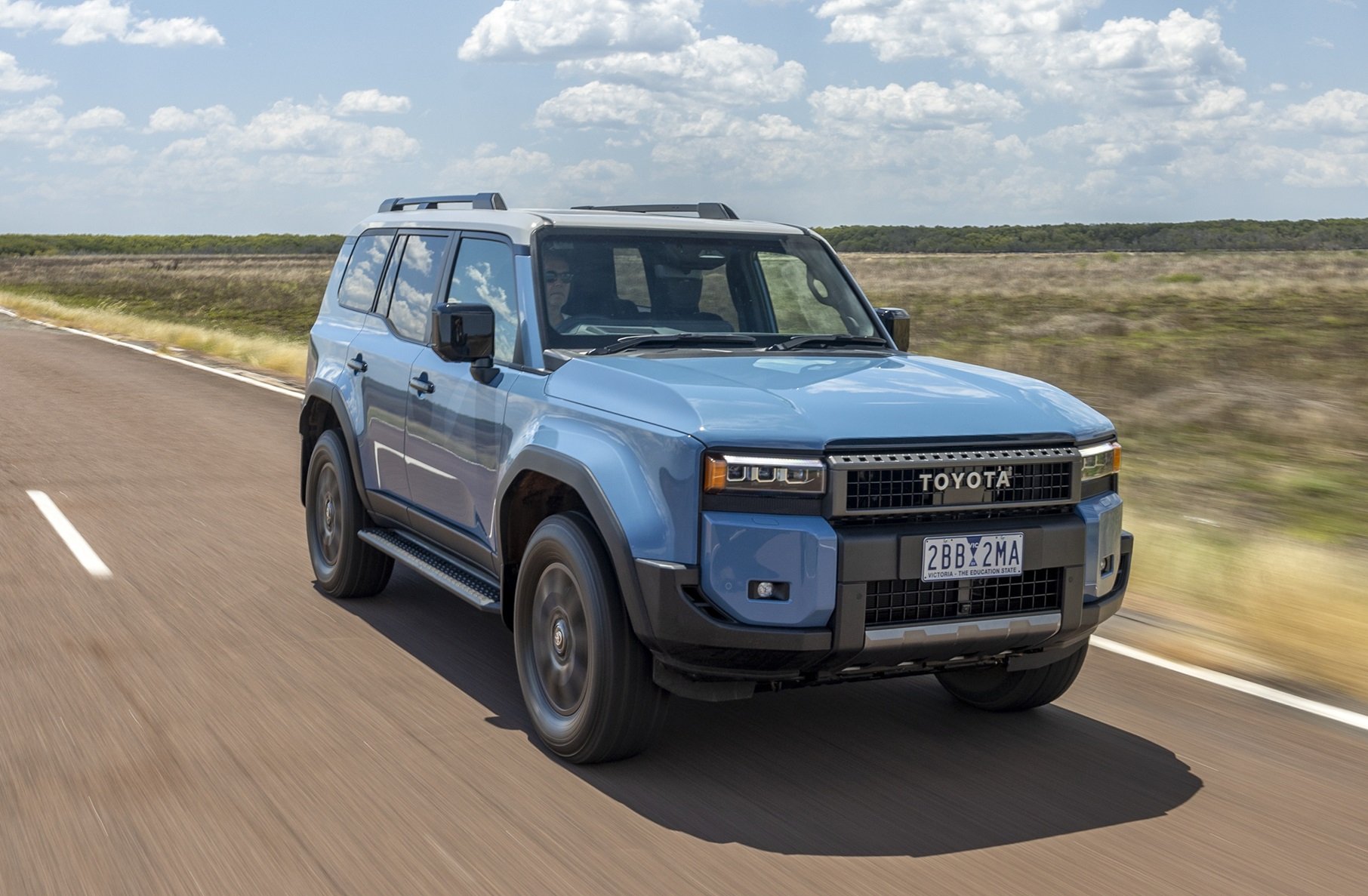
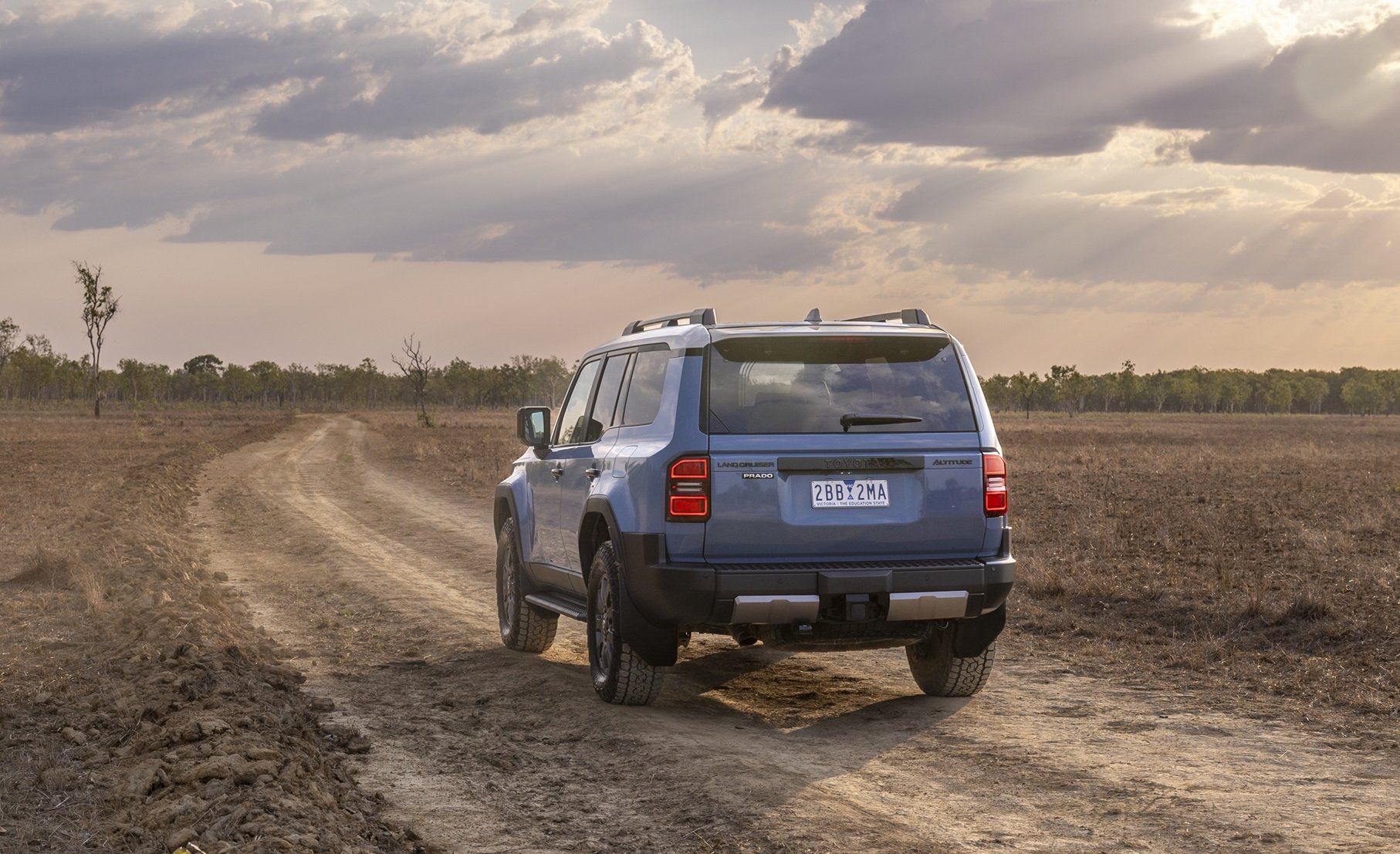
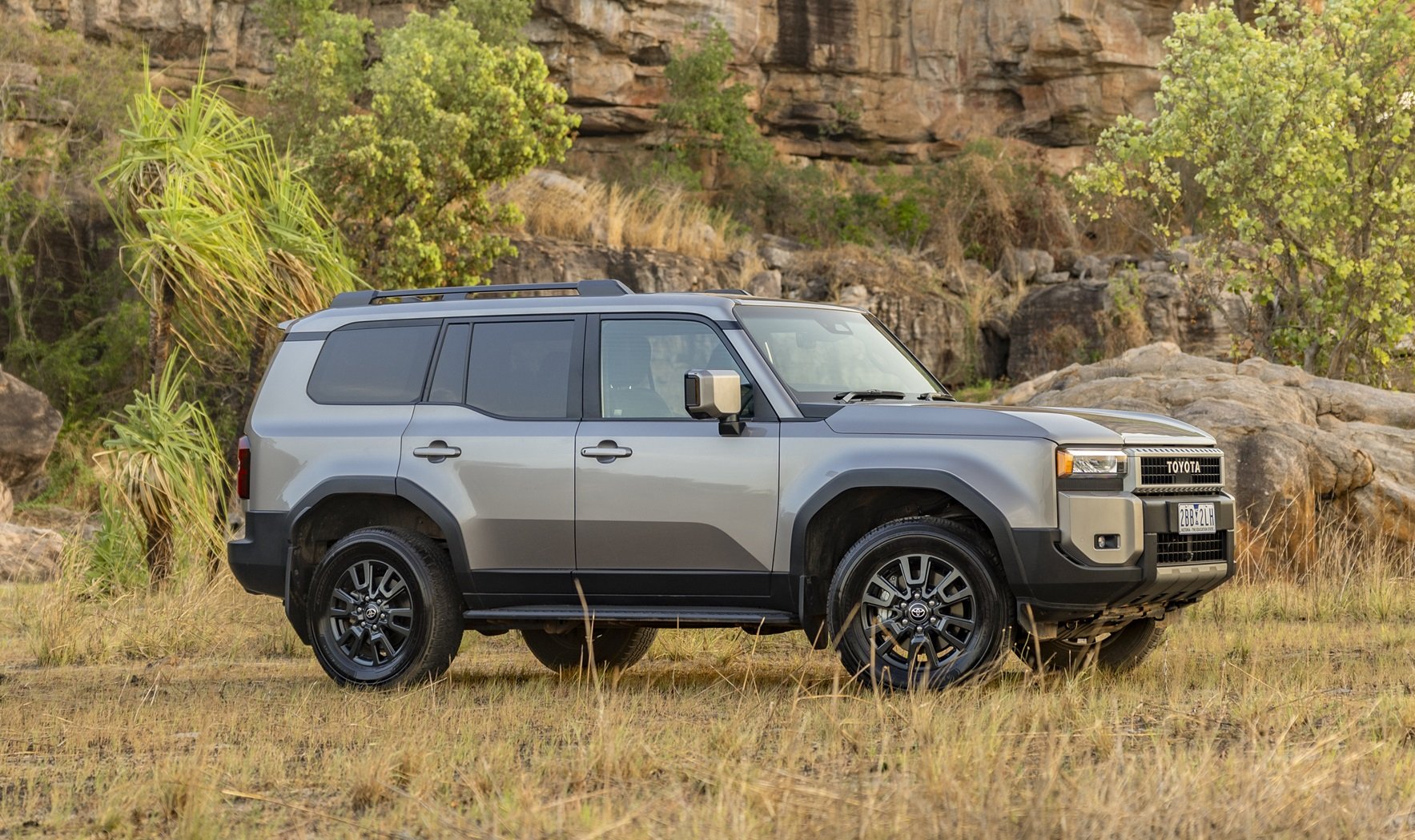
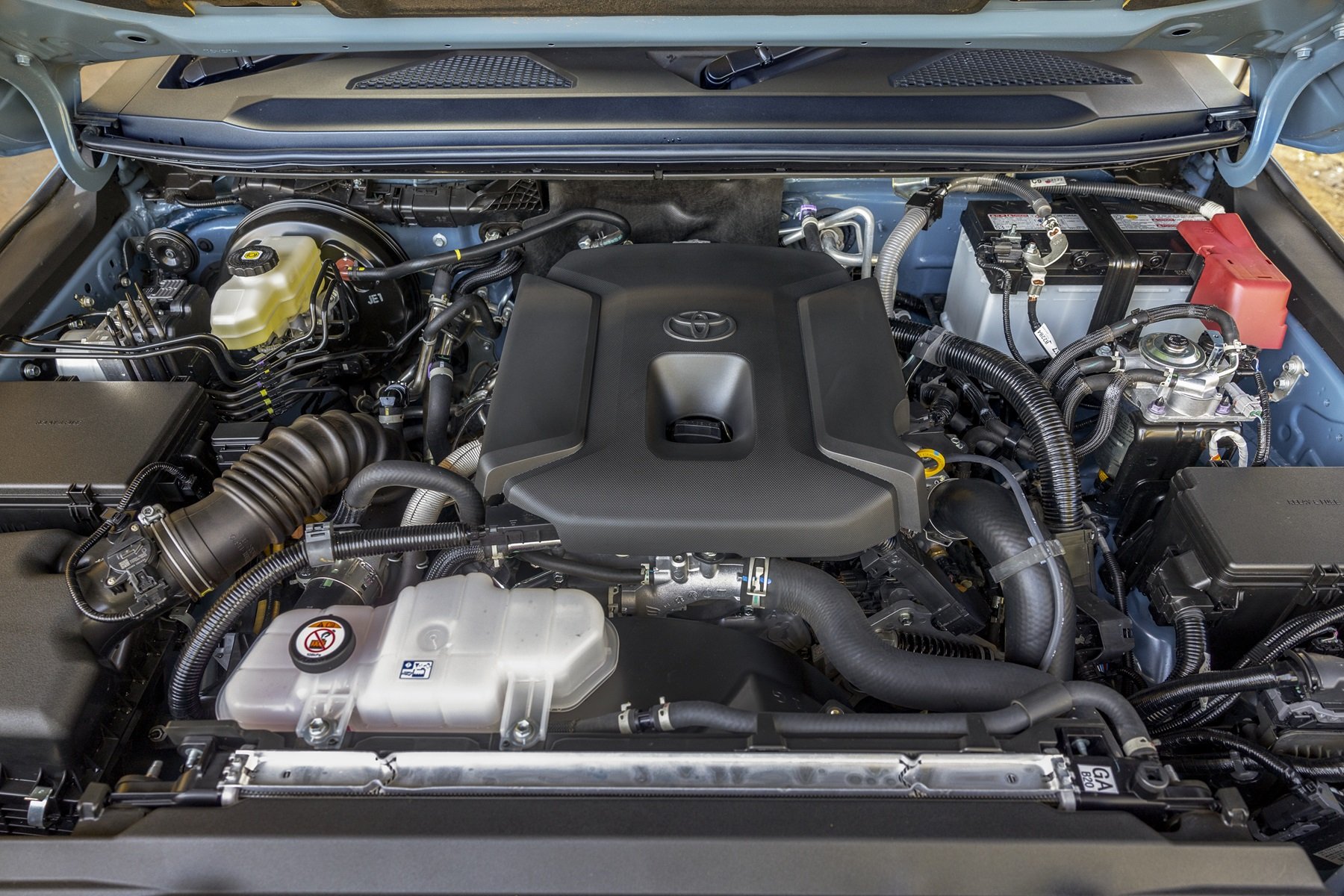
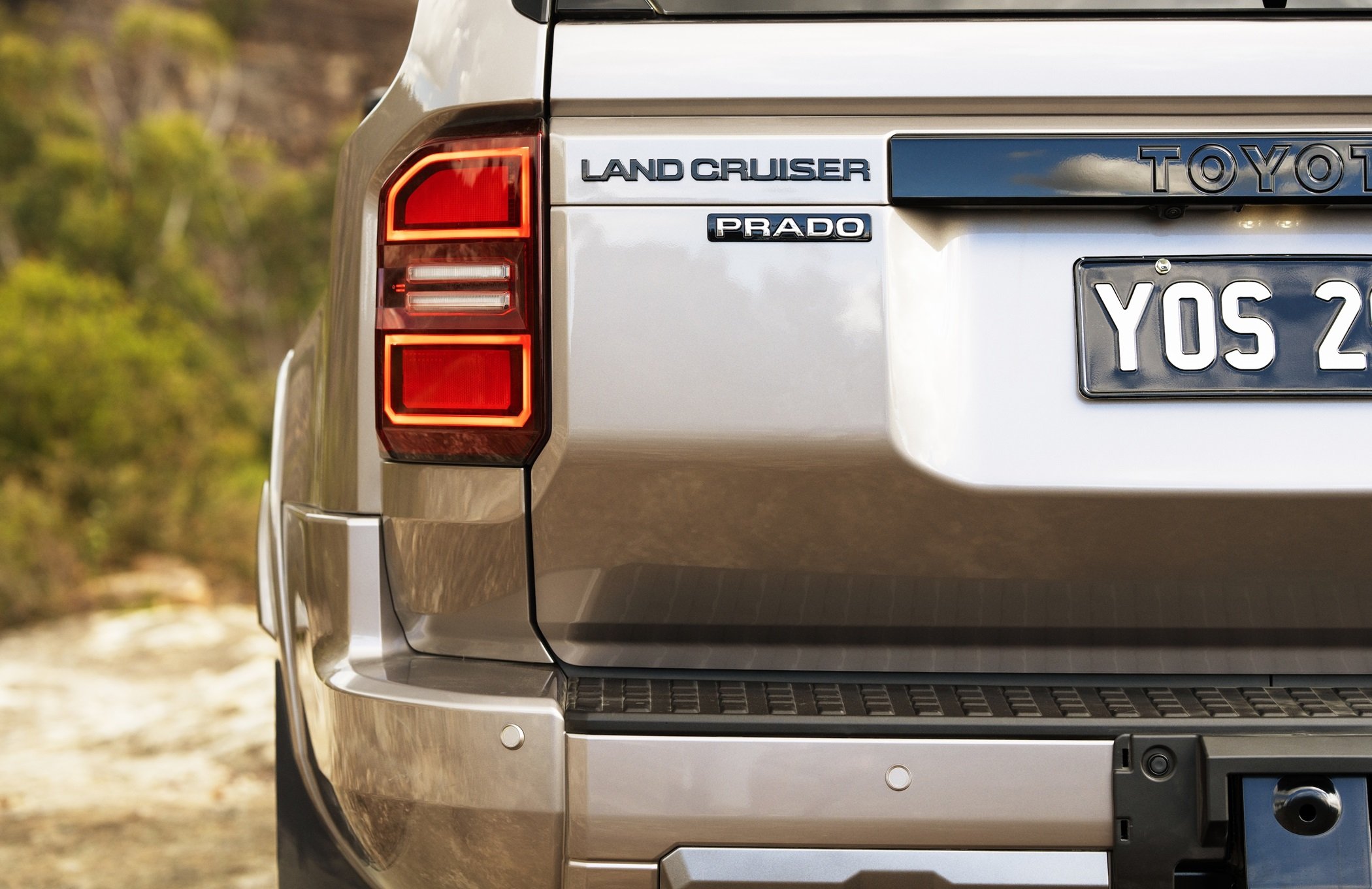
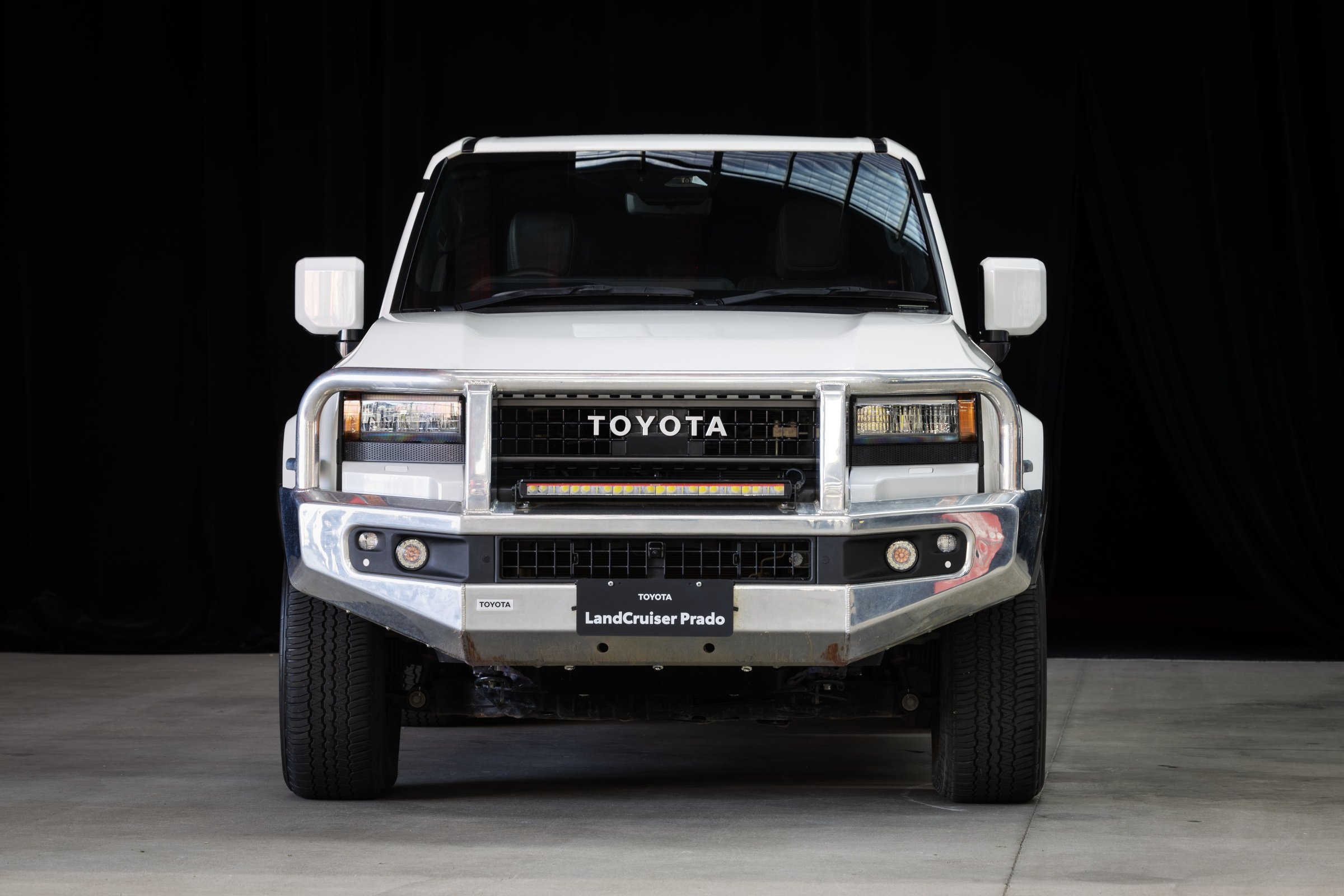

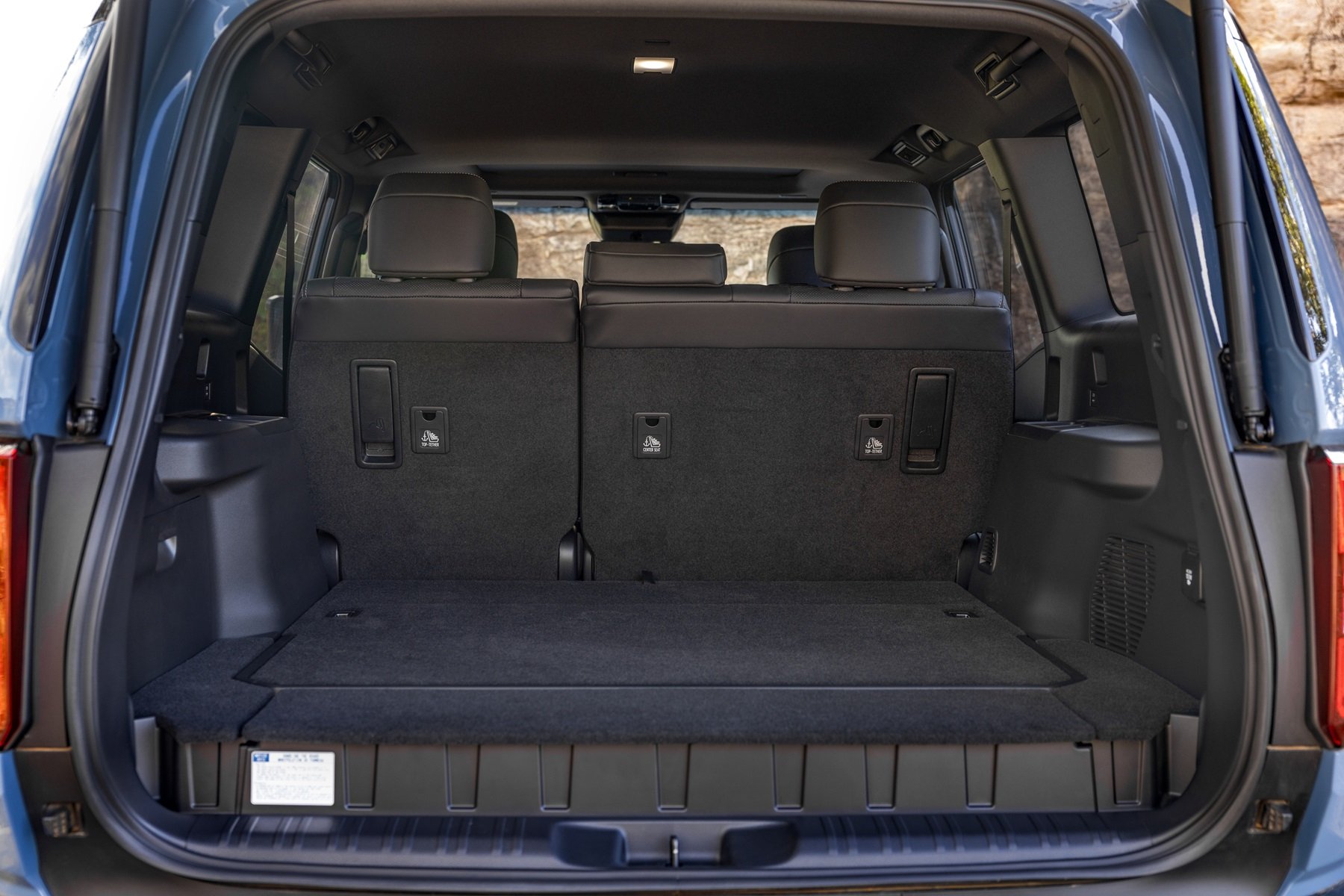
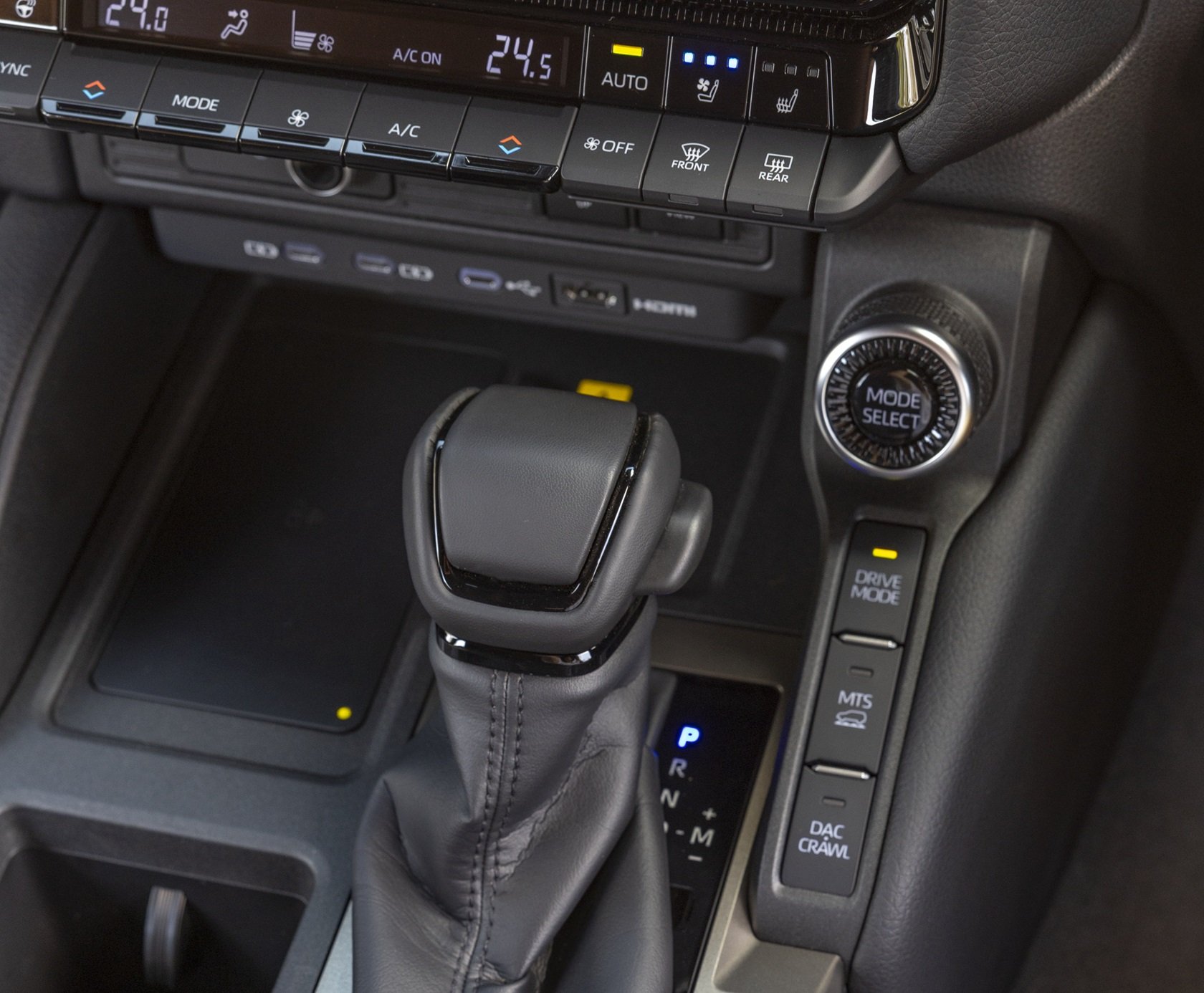
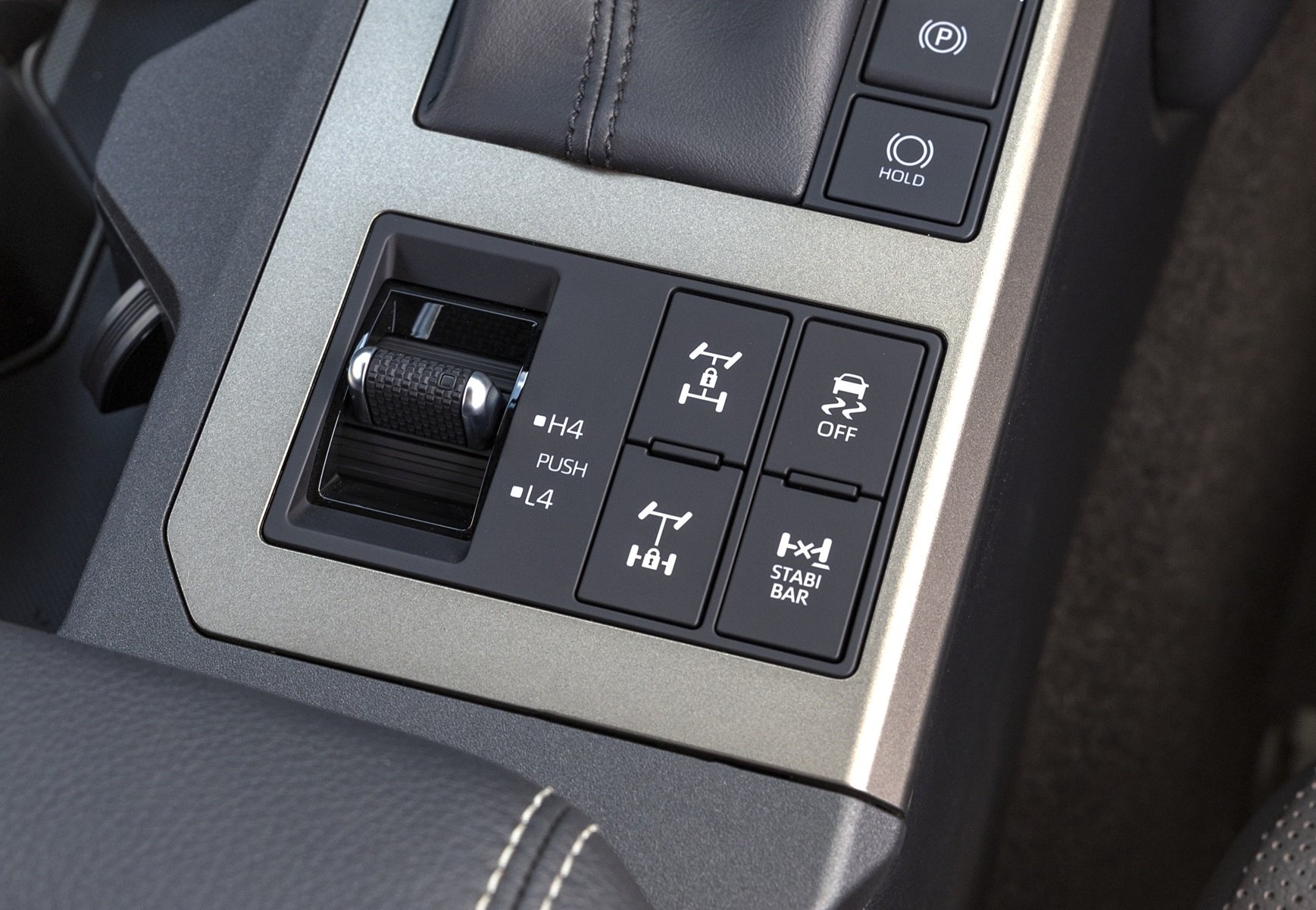
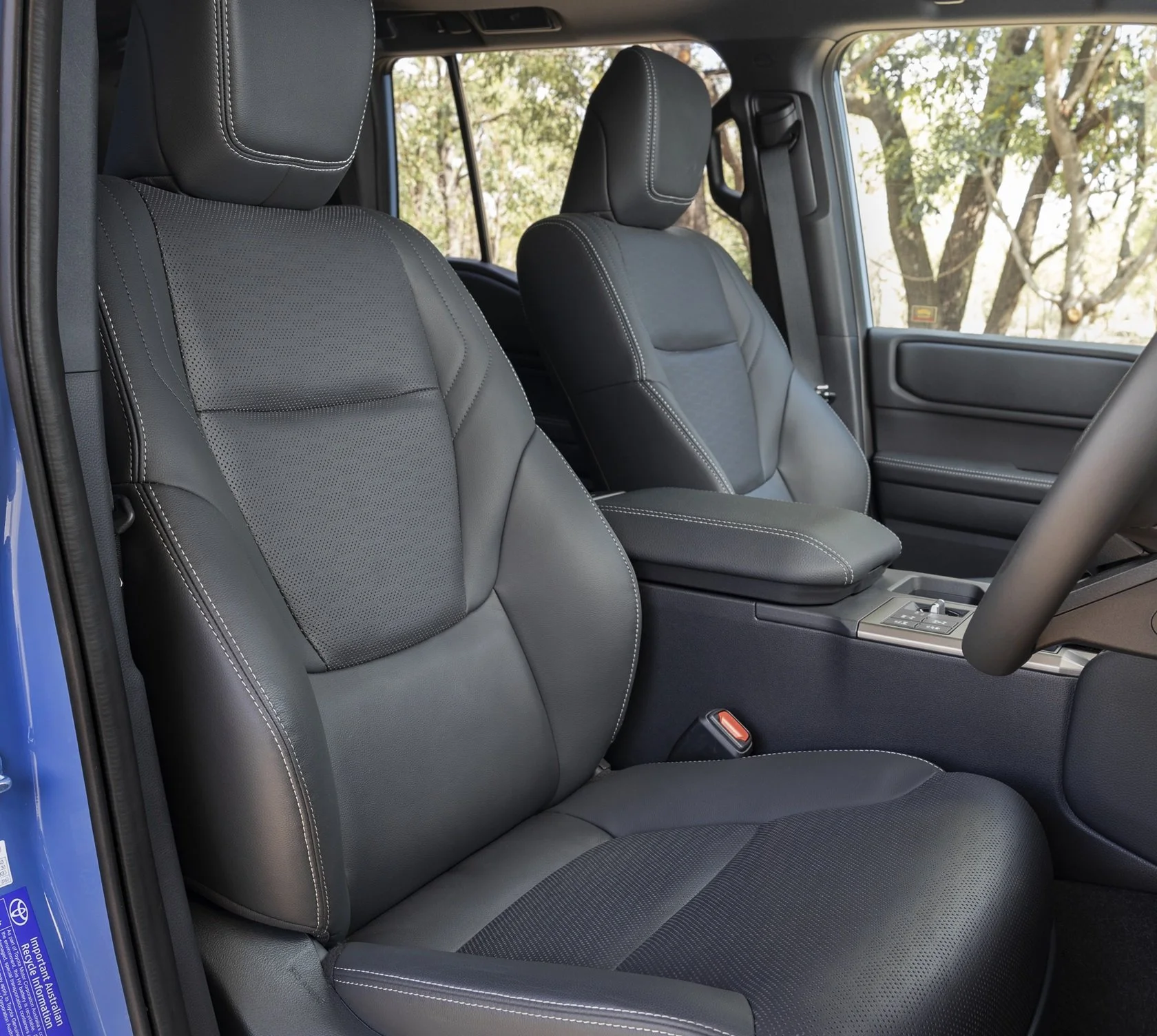


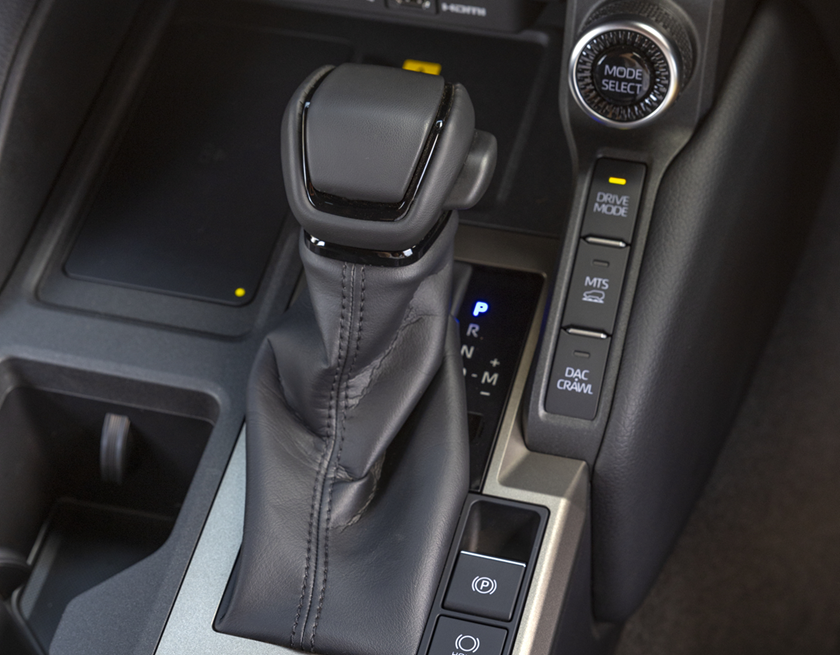

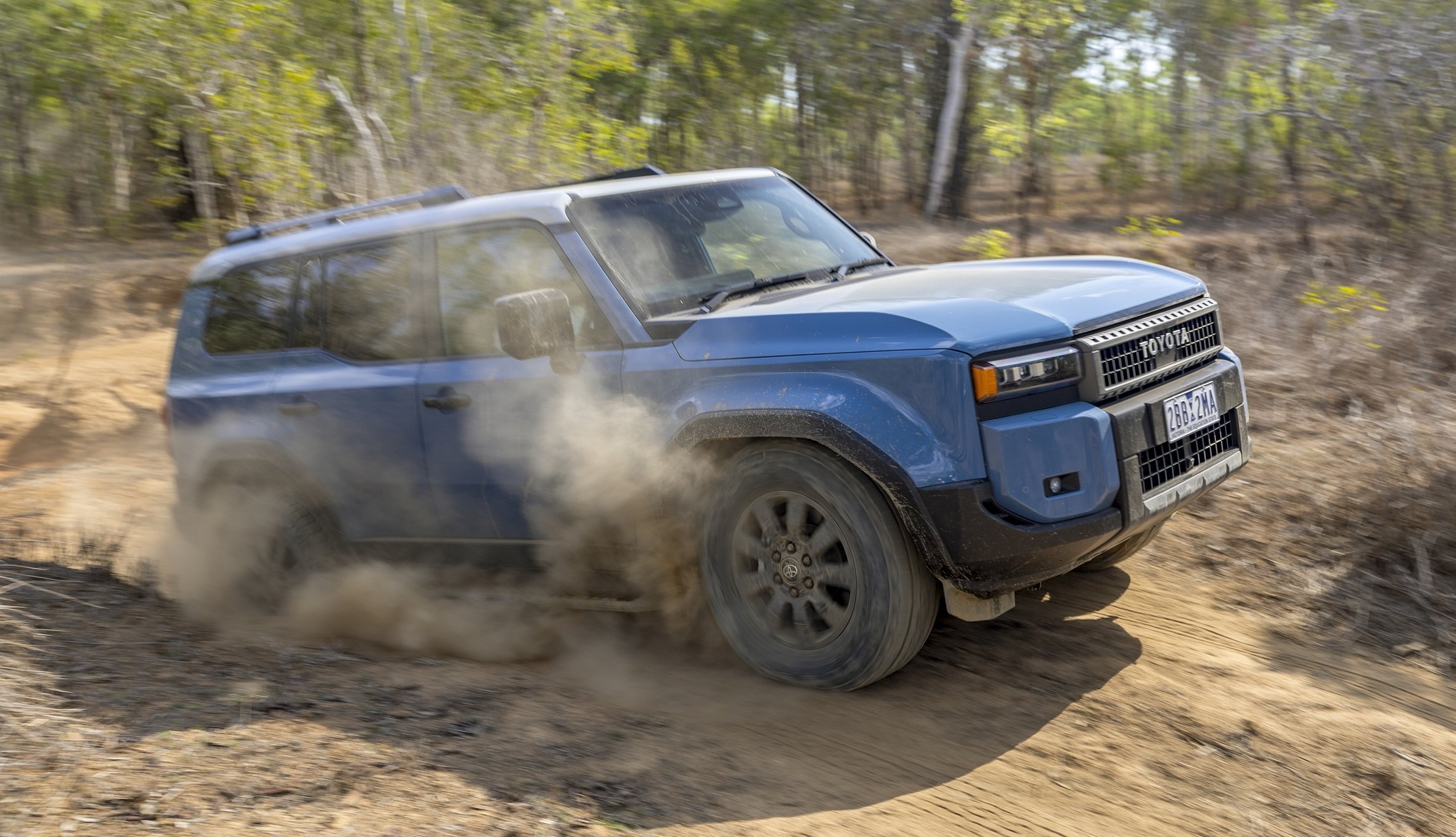
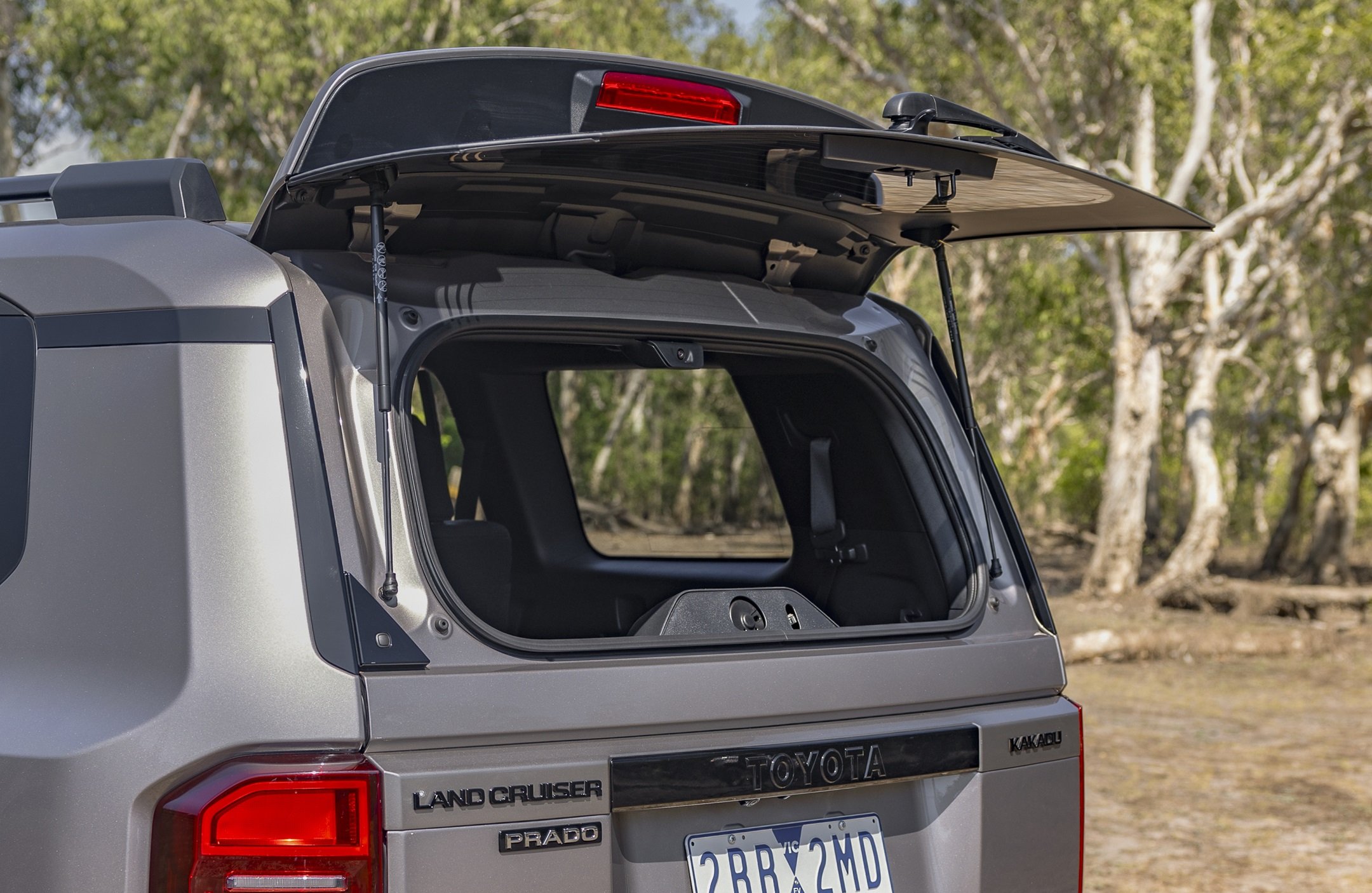

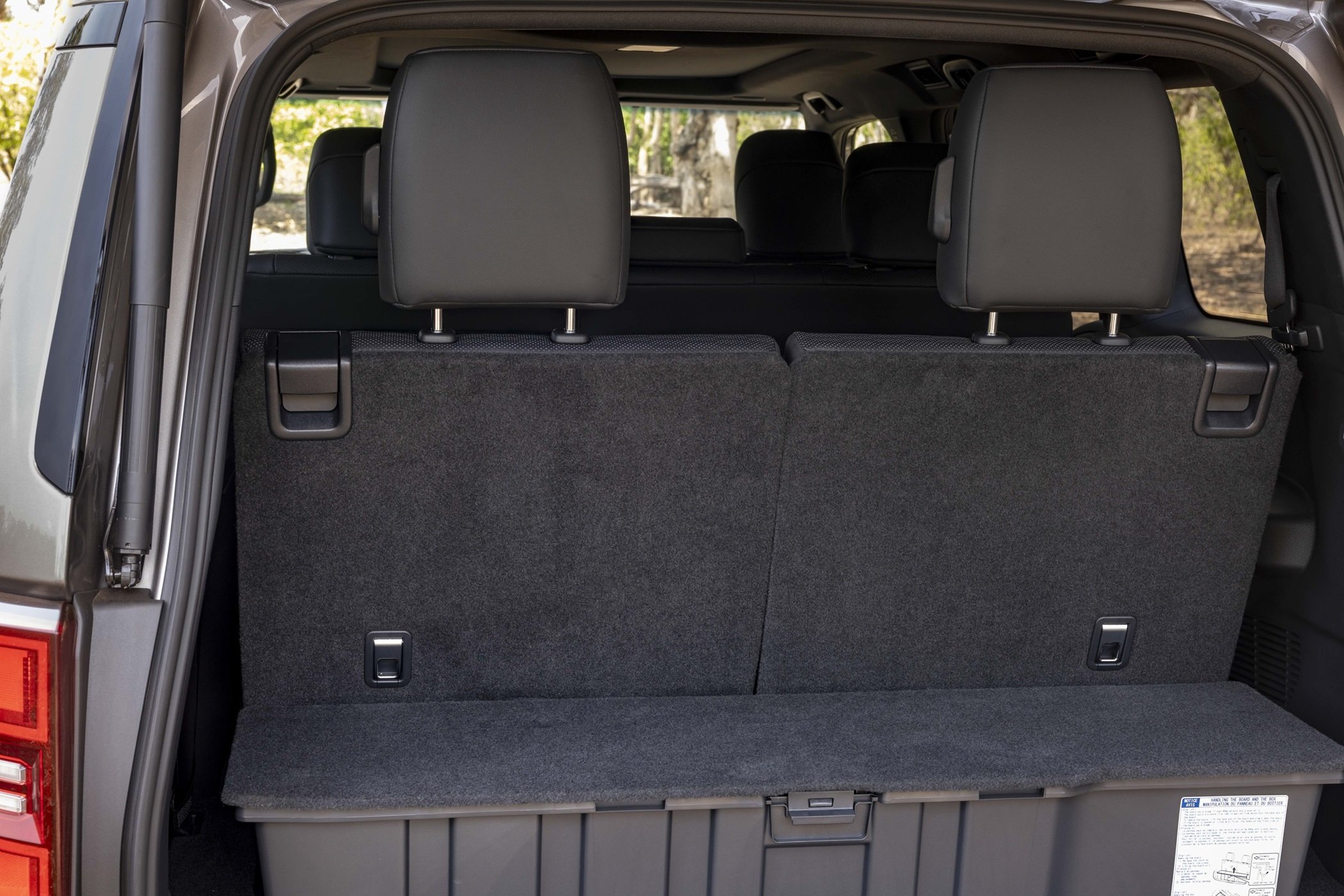
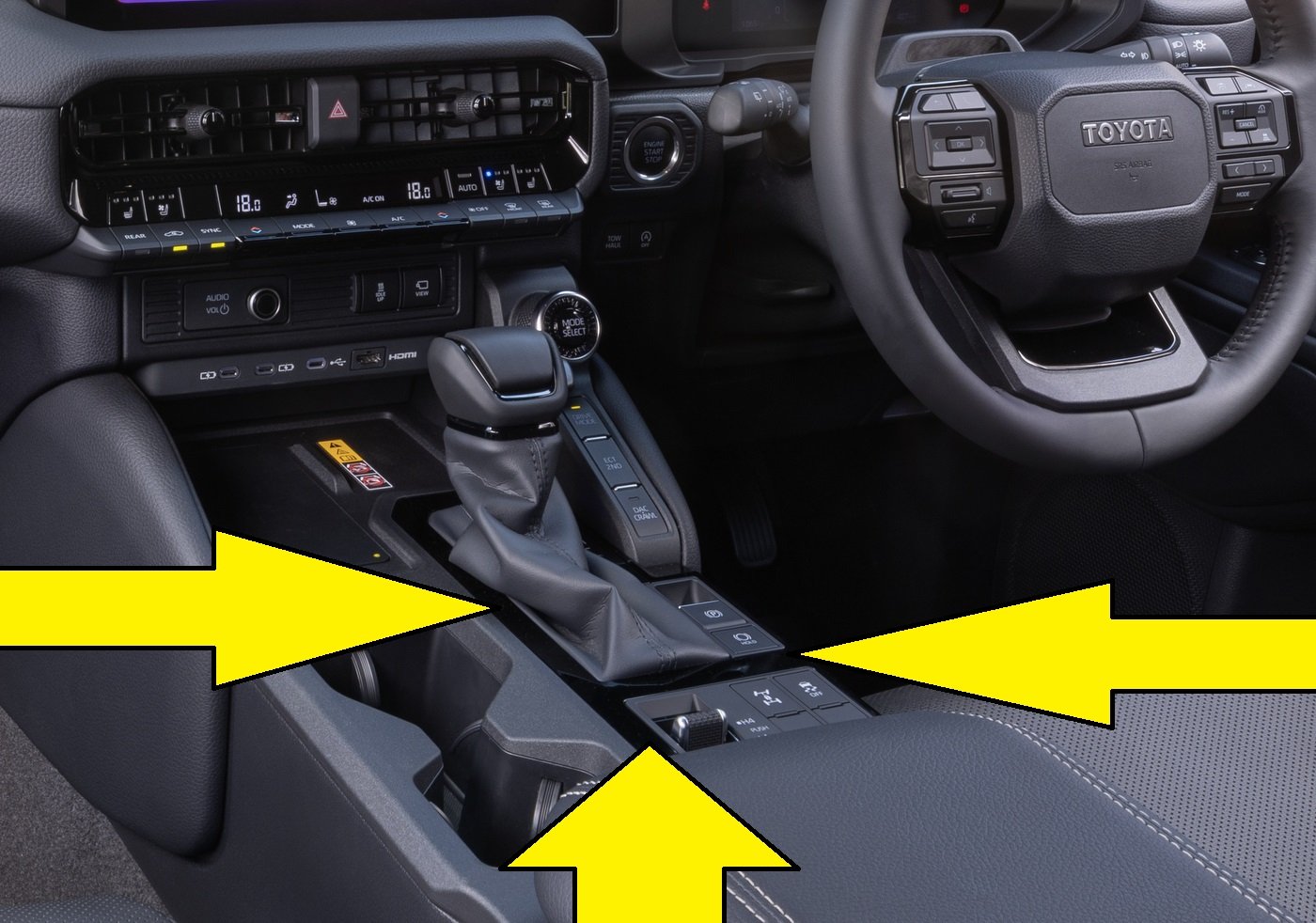

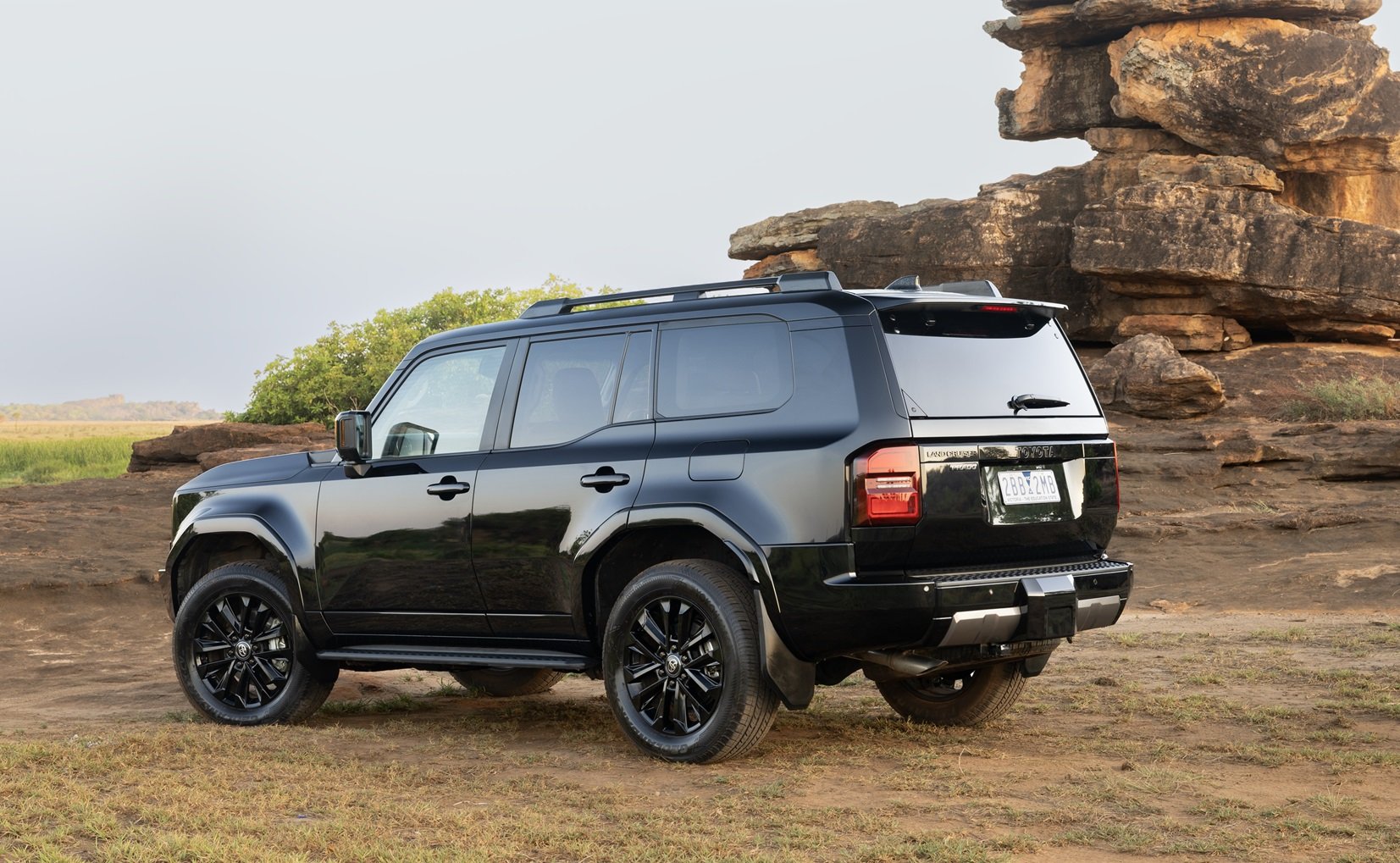


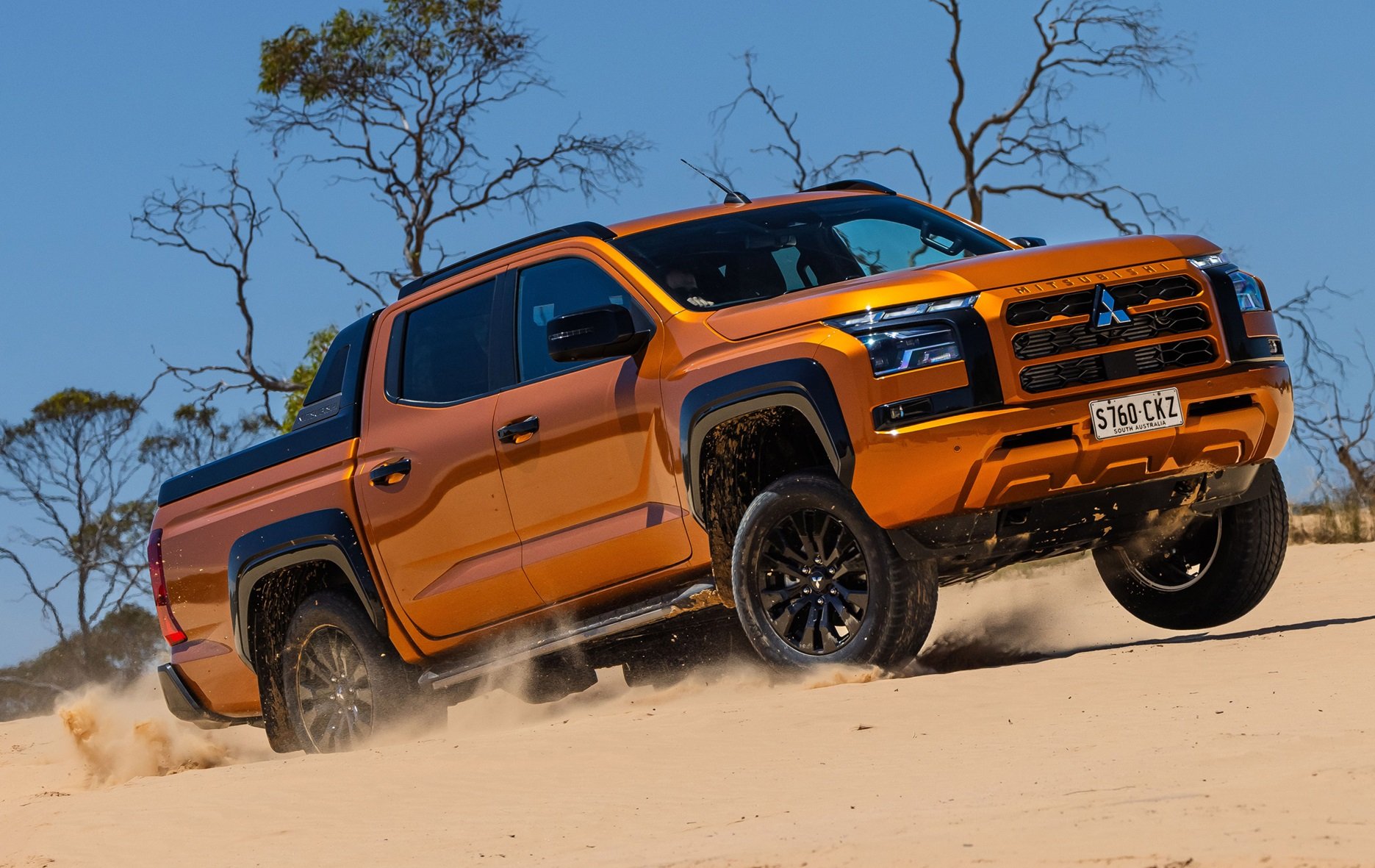
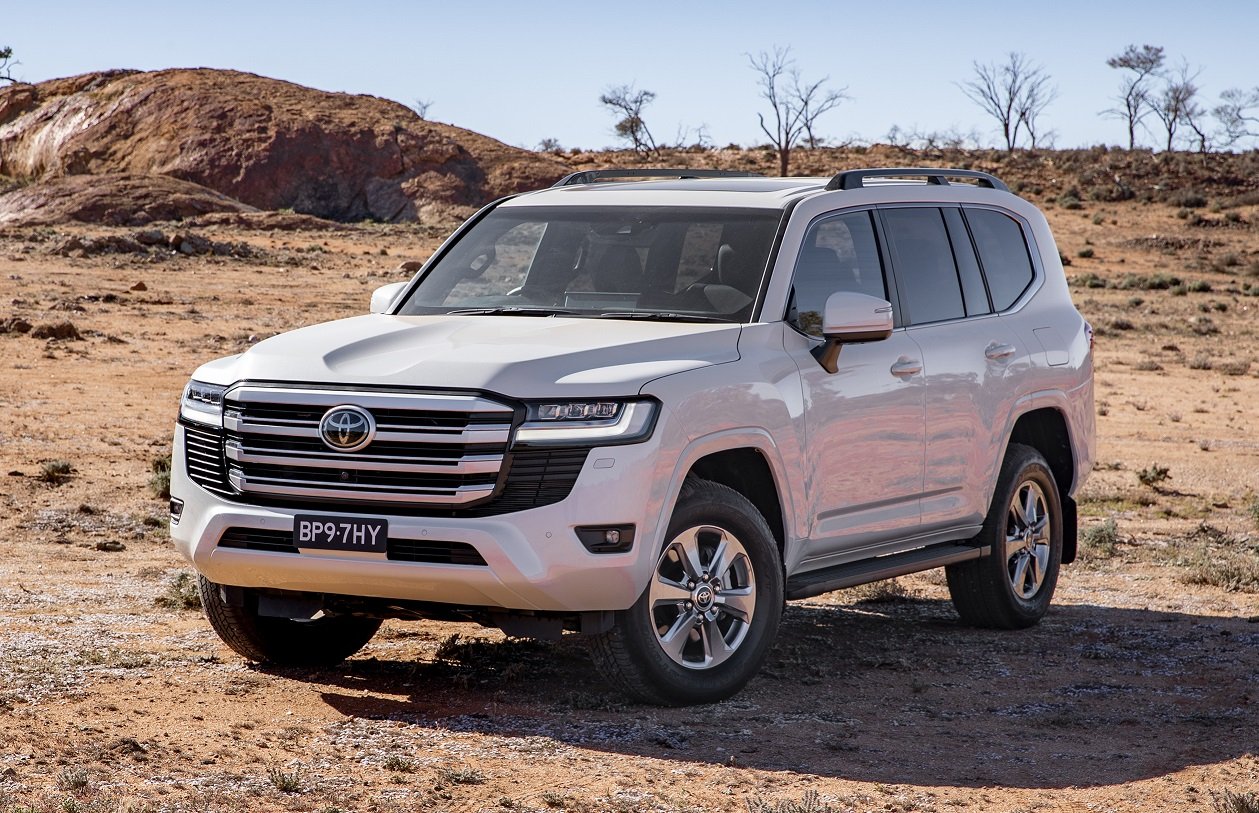
If you’re in the market for a hardcore 4X4 wagon that can tow, climb and haul, the Isuzu MU-X is not a bad idea. But here’s why you should take a good hard think before dropping up to $80K on this seven-seat four-wheel drive…